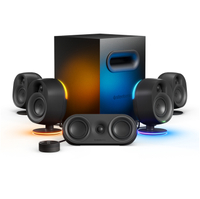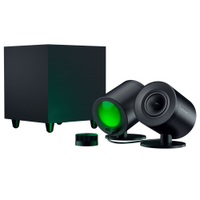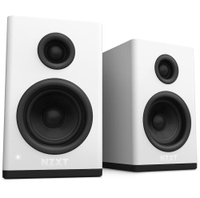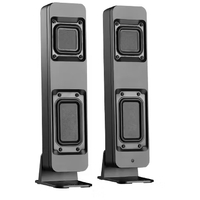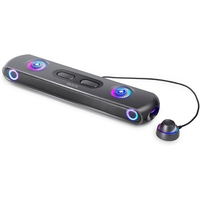Best PC speakers in 2025: from 2.1 systems to bookshelf bangers, these are the best gaming PC speakers
Treat yourself to an awesome audio experience with the best PC speakers.
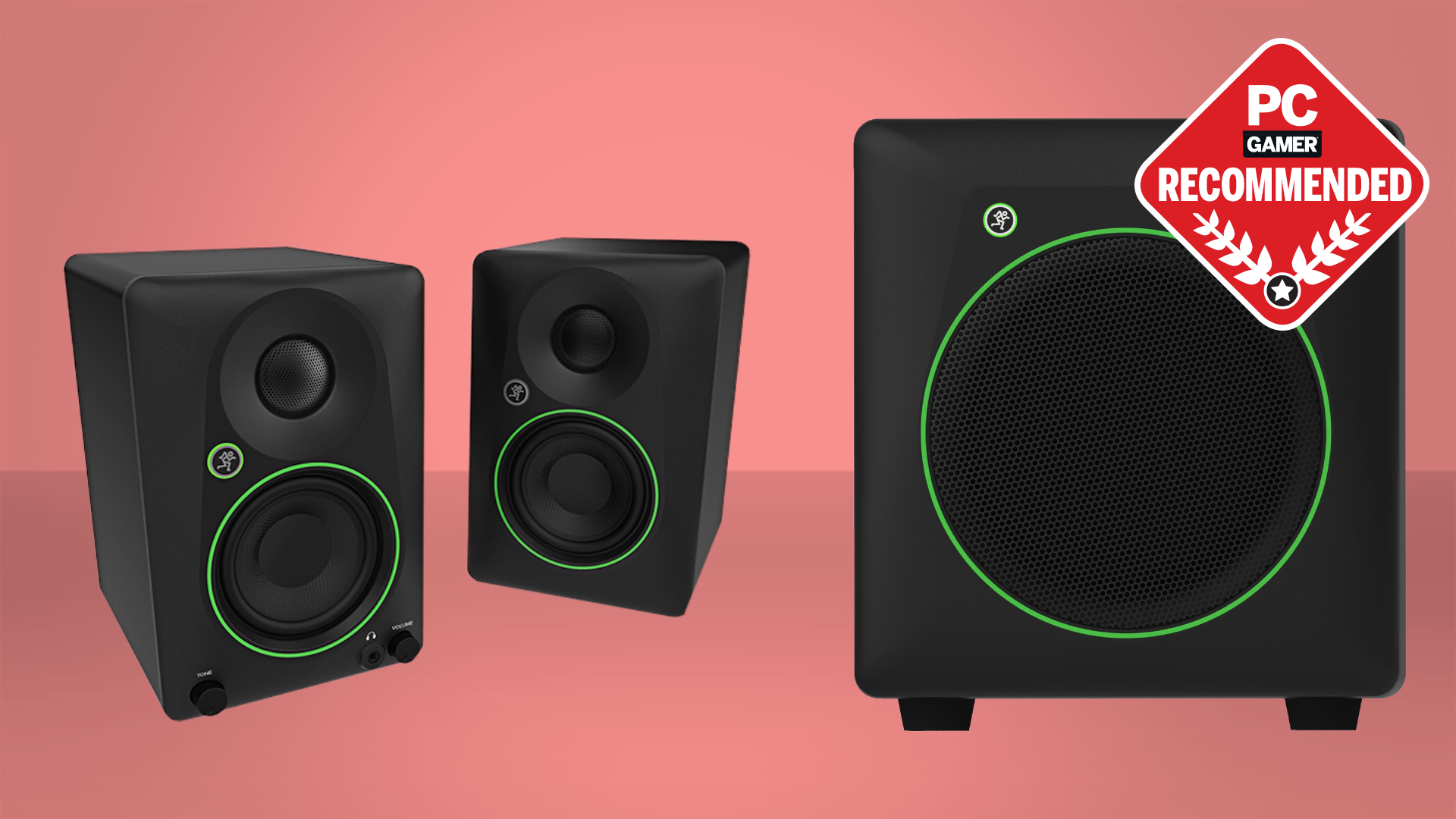
We've been blasting the best PC speakers all day and all night to find out if they've got what it takes to earn a place on our desks. Sure, the best gaming headsets will give you a more intimate immersion, but there's nothing like enjoying your audio out loud with the best gaming PC speakers.
The best computer speakers overall are the Mackie CR3.5BT + CR8SBT subwoofer combo, as the units combine to make a multitalented and mega-powerful 2.1 setup with superb flexibility and excellent overall audio quality. The best budget gaming PC speakers are the Creative Pebble Plus units, which make up a small yet surprisingly powerful package for very little cash.
If you have the space under your desk, then you should go for the typical 2.1, left/right speaker setup with a subwoofer on the floor. But a good PC soundbar is always worth considering, as they've made a punchy comeback in recent years that places excellent depth of sound and positional audio at the front and center of their priorities. Below, you'll find my top recommendations for loud, reliable PC speakers and soundbars for your desktop.

Andy's had the pleasure of working with some of the best speakers money can buy in multiple recording studios over the years, and more than a few mega-powered live rigs, too. With a penchant for audio nerdery and an aural attention to detail, he's well qualified to tell you which speakers sing, and which should be best avoided.
Updated 2 June, 2025 to give this guide a once over and double check all of our recommendations below still represent the best PC speakers you can pick up right now.
Updated 2 April, 2025 to give this guide a fresh Spring clean and to check through our recommendations to ensure that they're still the best picks in each category. Since there have been no changes, you'll know that these really are the best speakers for gaming you can buy right now.
Updated March 21, 2025 to add the Mackie CR3.5BT reference speakers and CR8SBT subwoofer combo as our best PC speaker recommendation overall. They make for a flexible, immensely powerful setup when put together, but those who desire excellent bookshelf speakers on a budget would do well to check out the CR3.5BT speakers on their own, too. Mackie has delivered on its promise of multitalented speakers that can do it all.
The Quick list
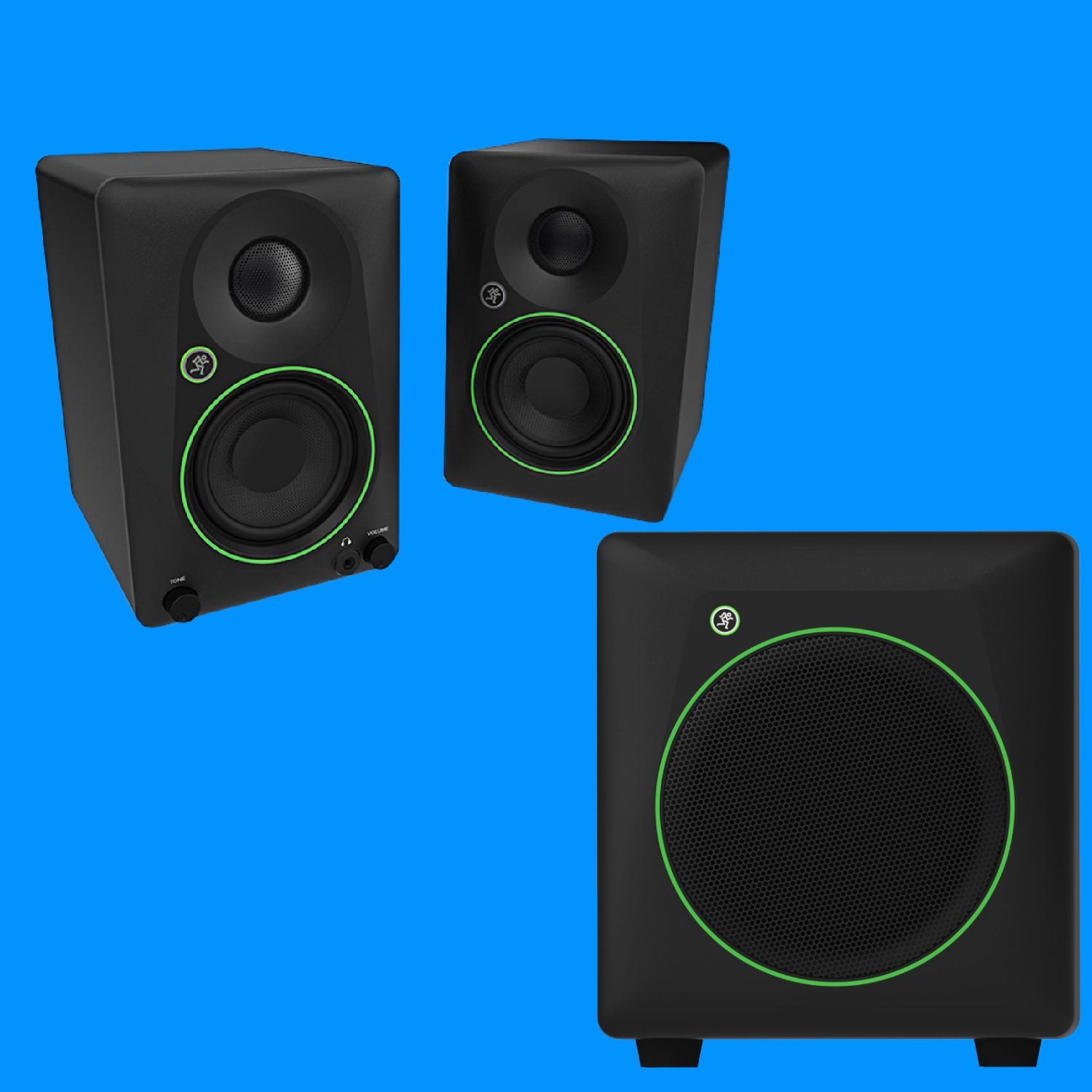
The best overall
When Mackie's ultra-flexible CR3.5BT reference monitors are paired with the CR8SBT subwoofer, the effect is nothing short of profound. A titanic 2.1 setup for sure, but the speakers themselves are well worth a look on their own if bass isn't your top priority.
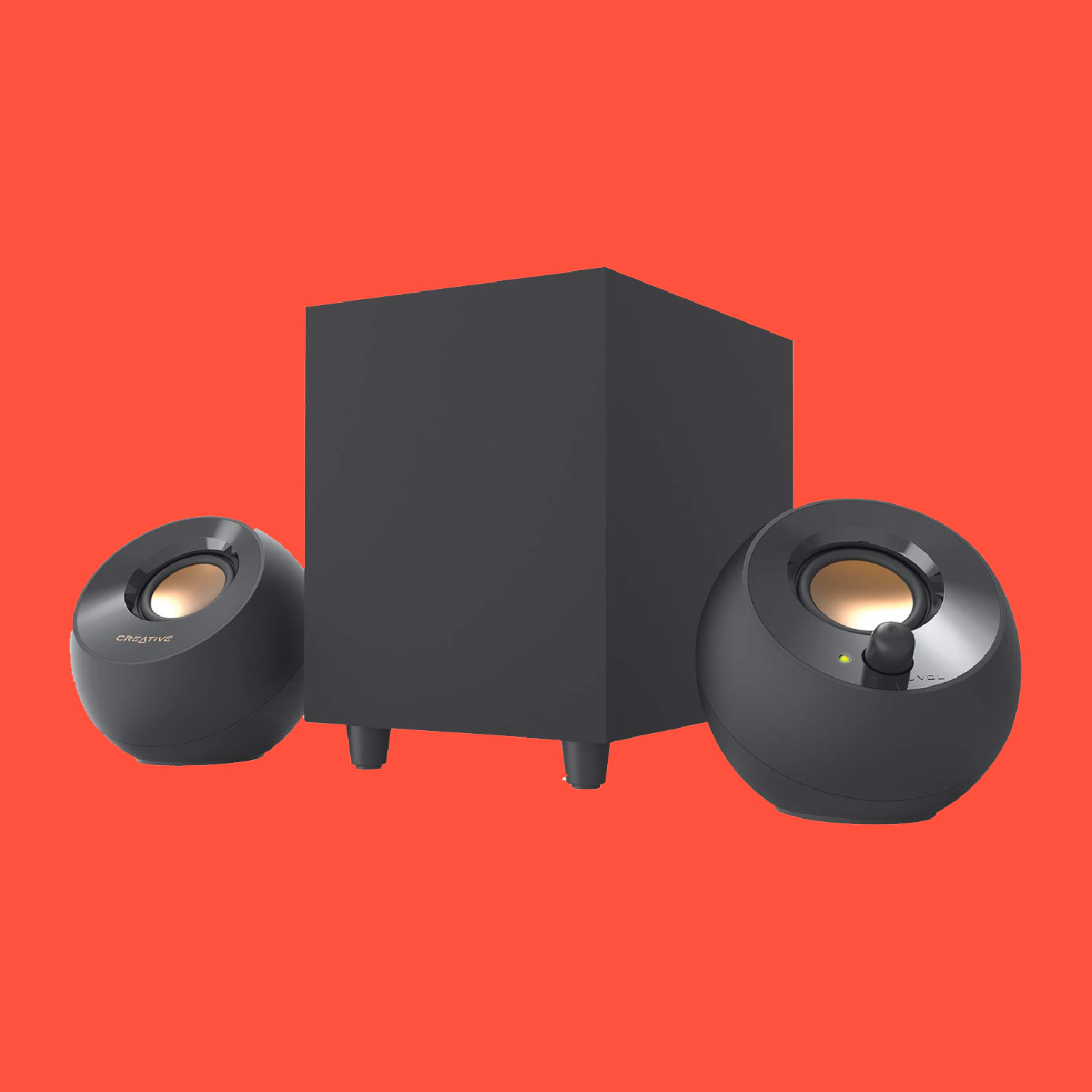
The best budget
They might be cheap, but you're getting a huge amount of sound for your money. Though the bass isn't earth-shattering, these speakers still offer both excellent clarity and a small footprint. You can squeeze these clear performers in almost anywhere.
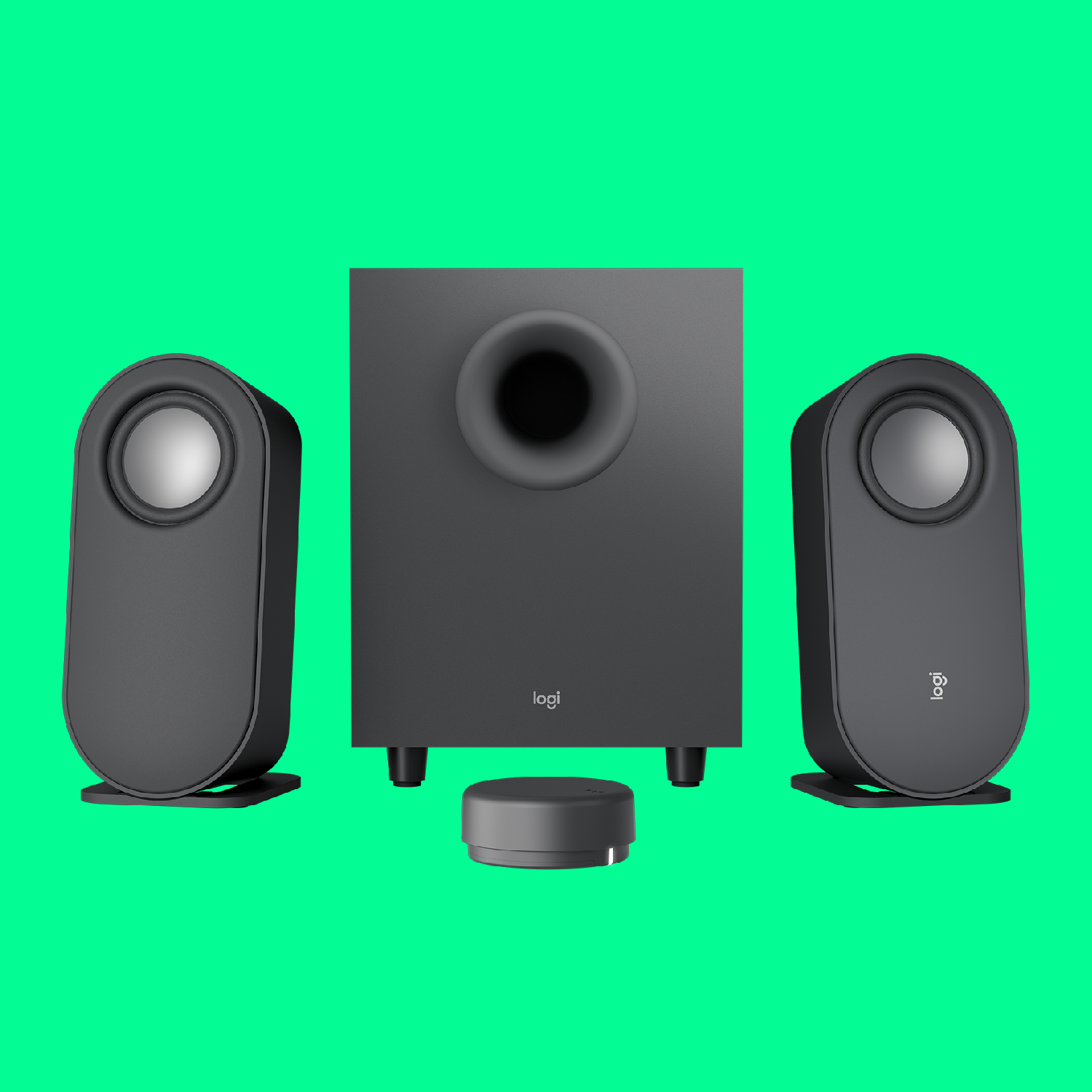
The best mid-range
While they might not have the "look at me" RGB lighting of their bigger brothers, the Z407s still offer great audio quality with the addition of a handy wireless control knob, all for a very reasonable price.
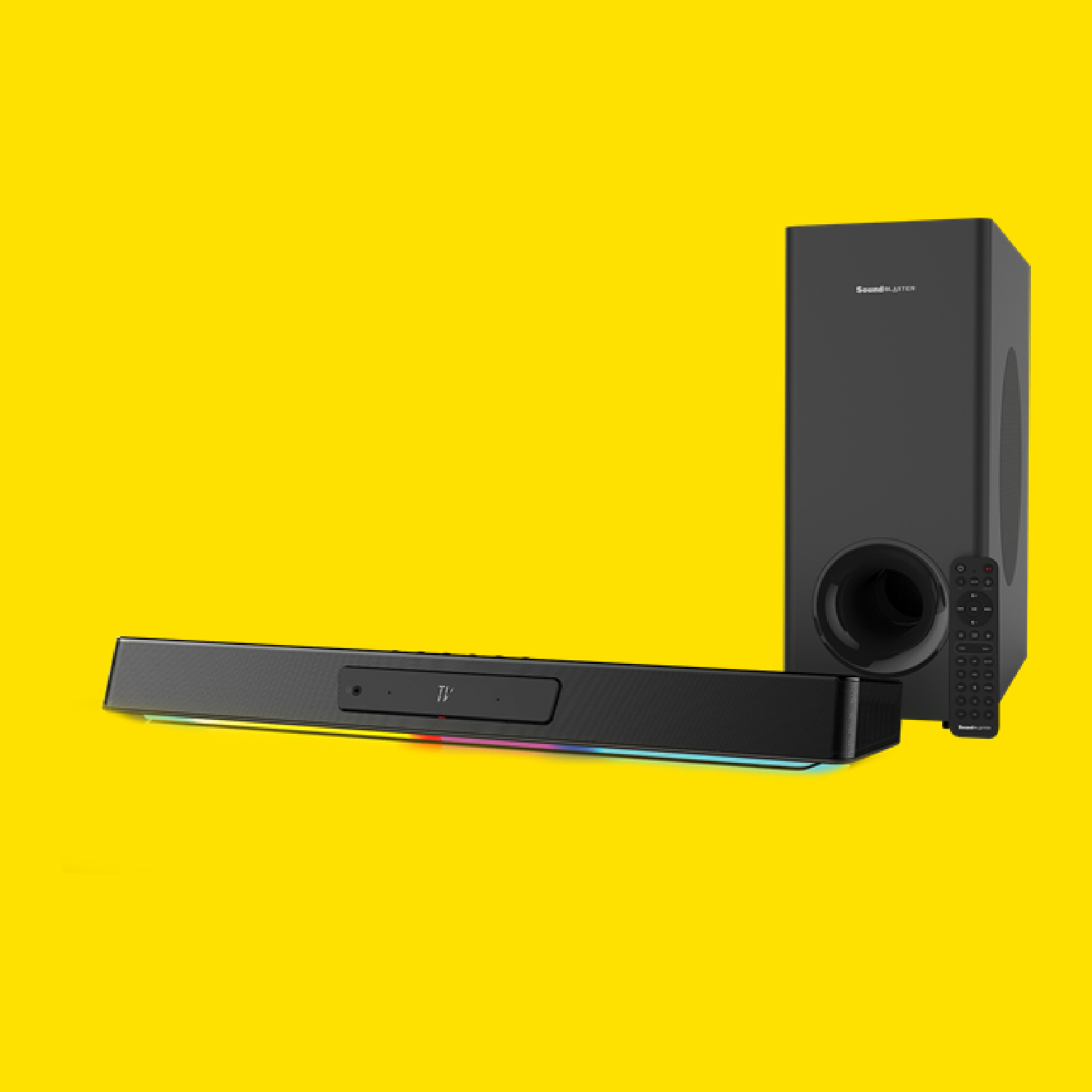
The best gaming soundbar
A well-designed soundbar solution, designed to prioritise PC gaming audio. That being said, with plenty of connection options, RGB lighting and a substantial sub, it's got plenty of flexibility for all sorts of uses.

The best wireless soundbar
The Soundblade might have trouble fitting in some setups, but its large footprint makes for a big, distinctive and accurate sound. Bluetooth 5.1 connectivity makes it a brilliant wireless choice.
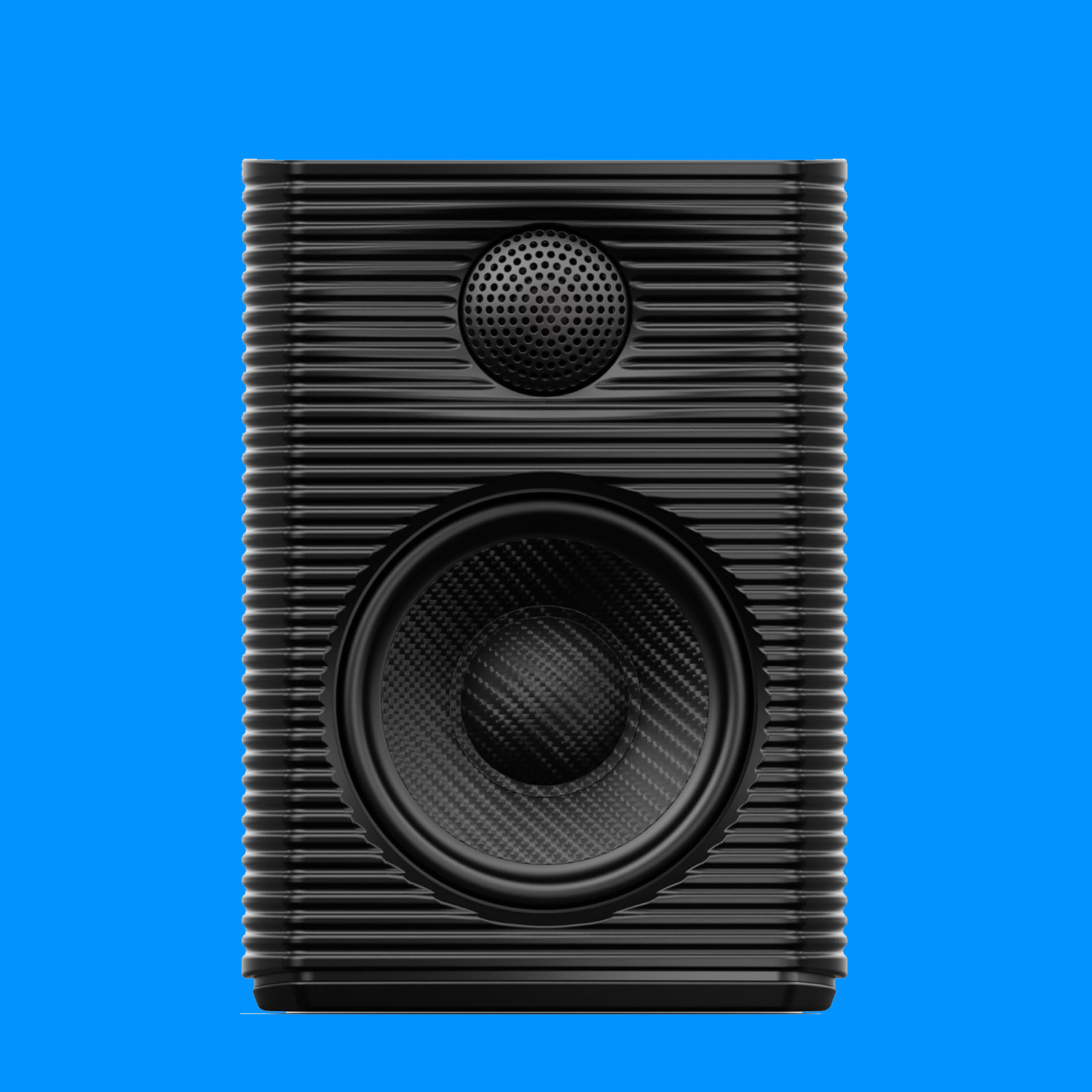
The best bookshelf speakers
This pair of chunky speakers offers a rich, smooth tone. It keeps games and music sounding their best and delivers a hearty bass response—even without a subwoofer.
⬇️ Click to load more of the best speakers ⬇️
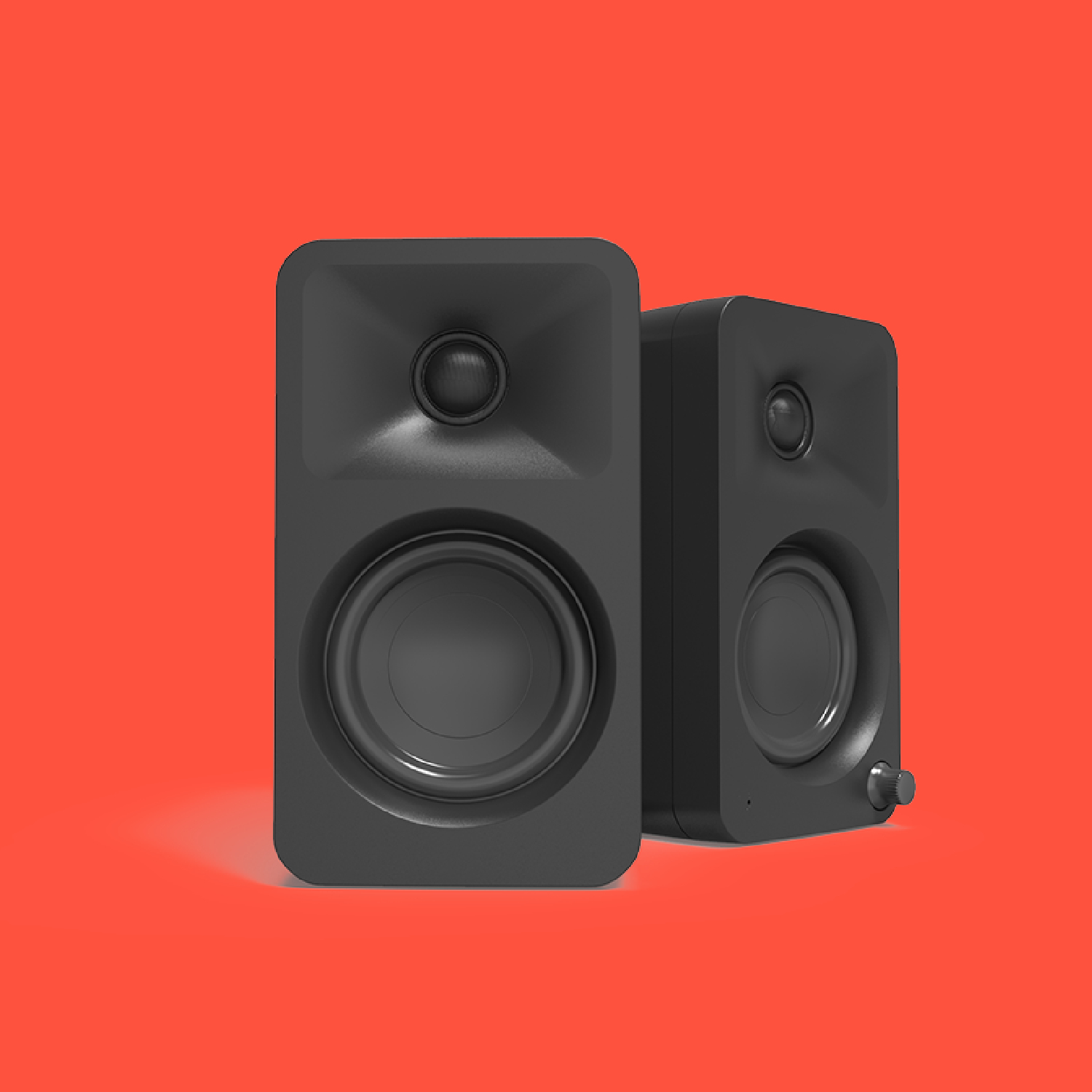
The best reference speakers
These aren't cheap, but the sound quality here is exceptional, and they're remarkably powerful, too. If you're looking to splash out on high-quality audio, these little units really kick.
The best gaming PC speakers
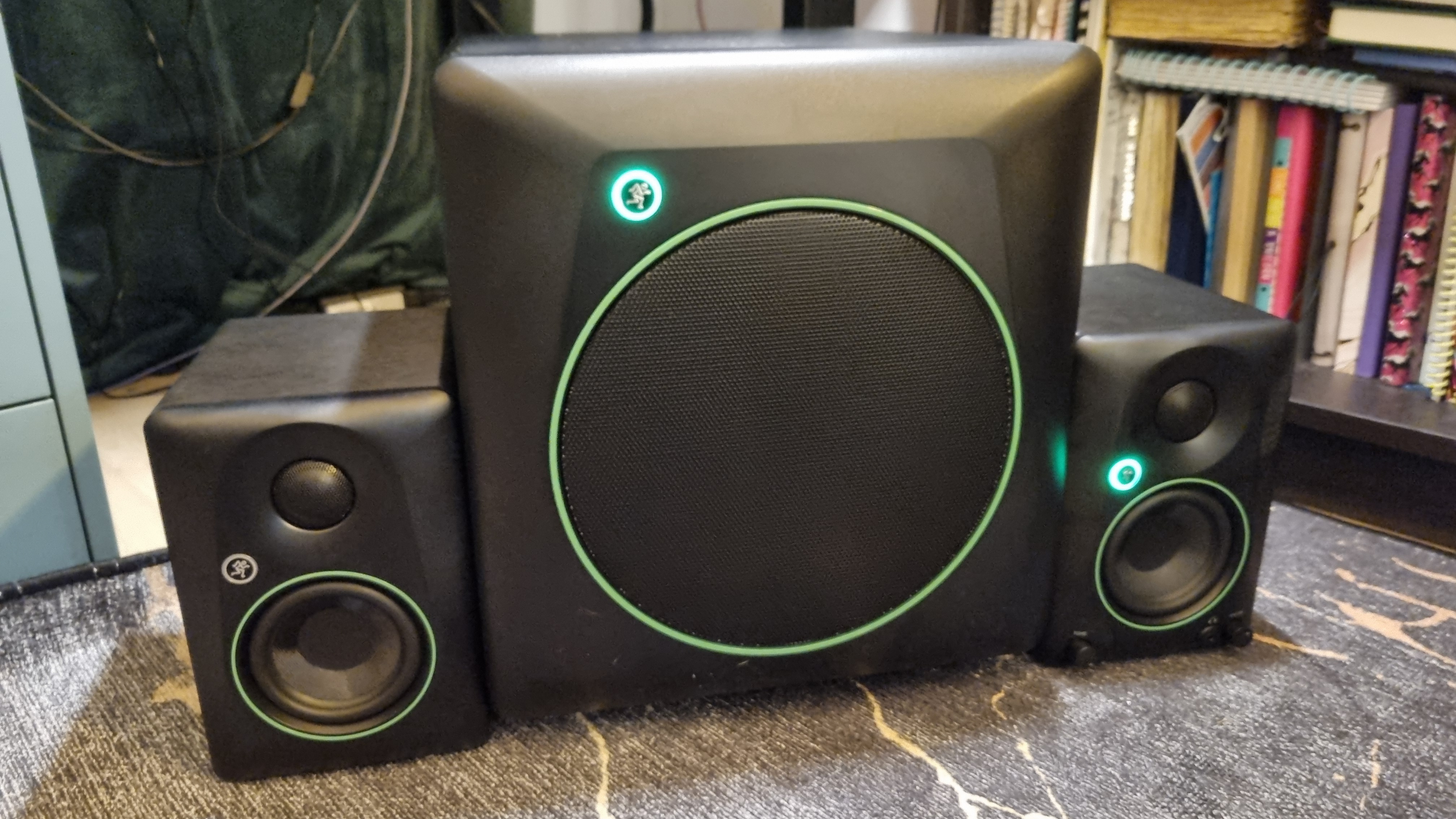
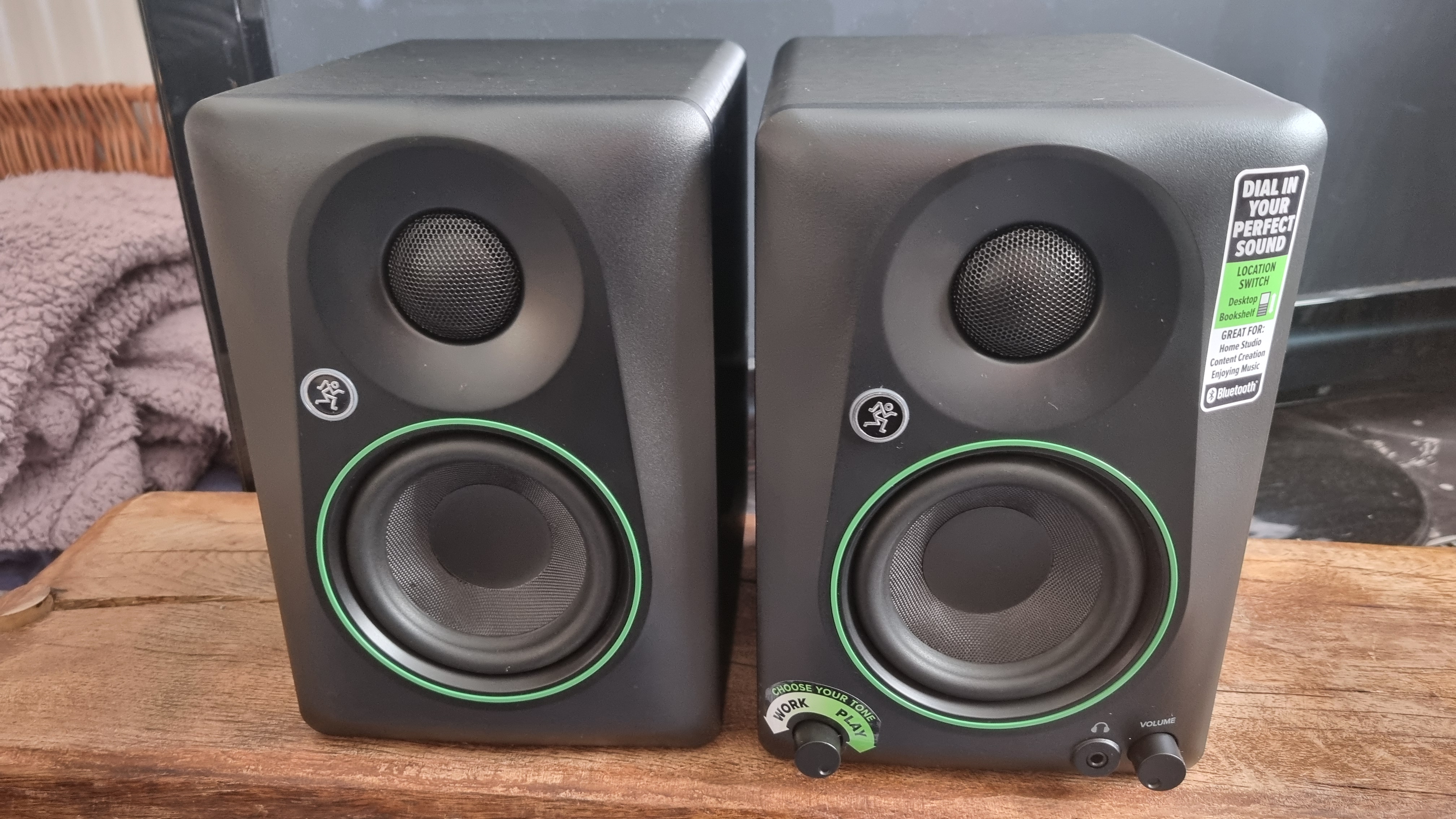


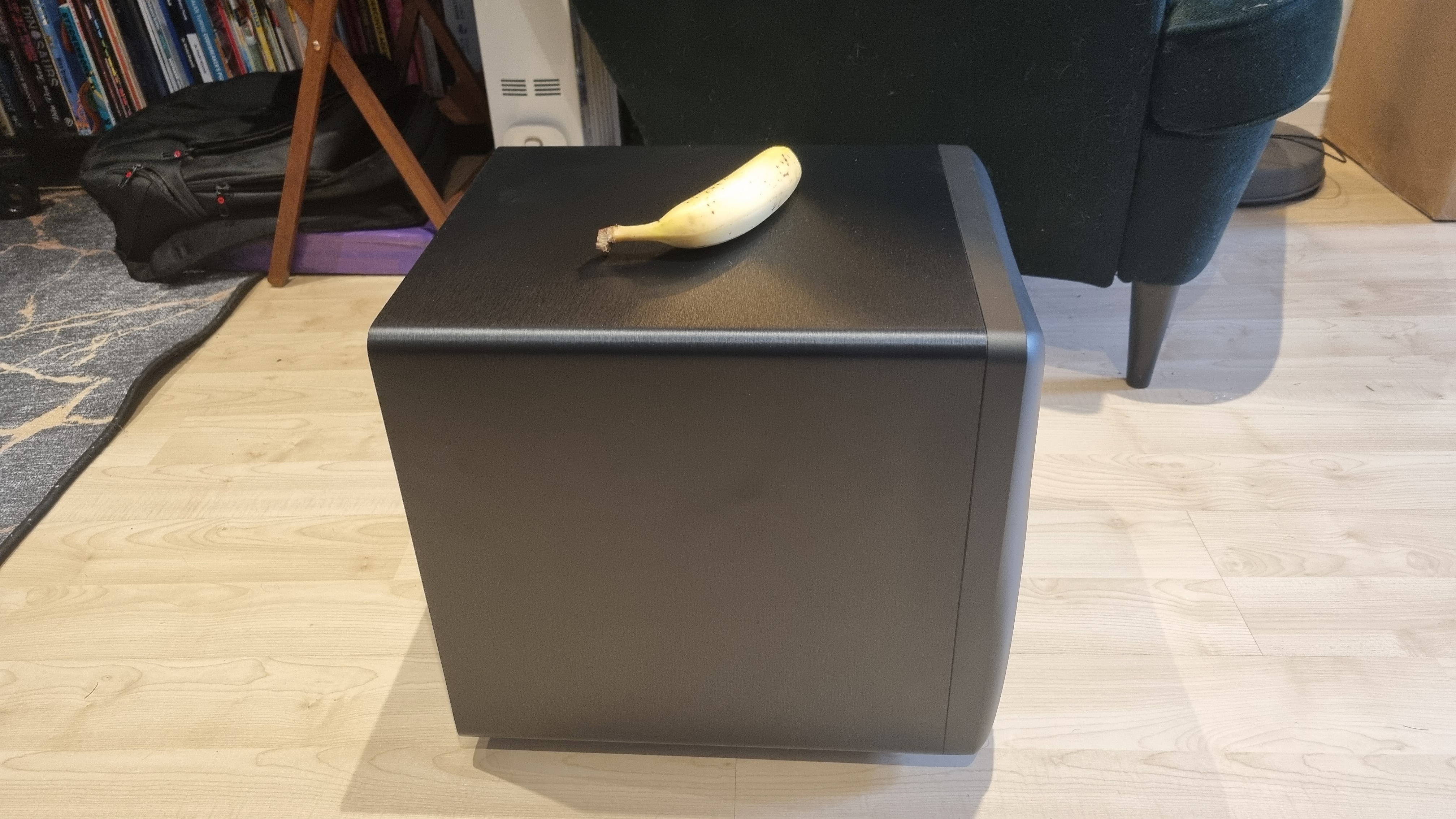
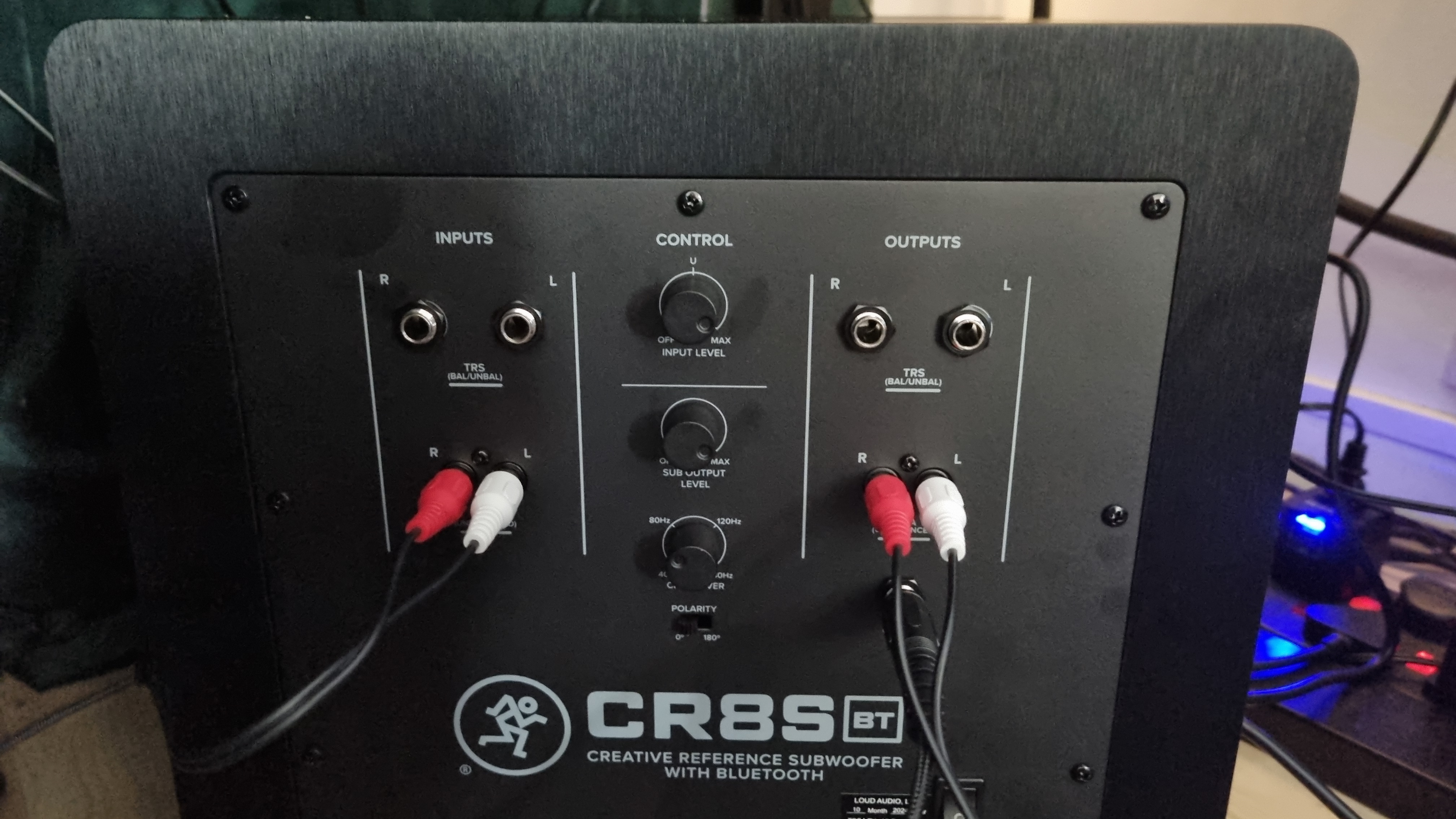
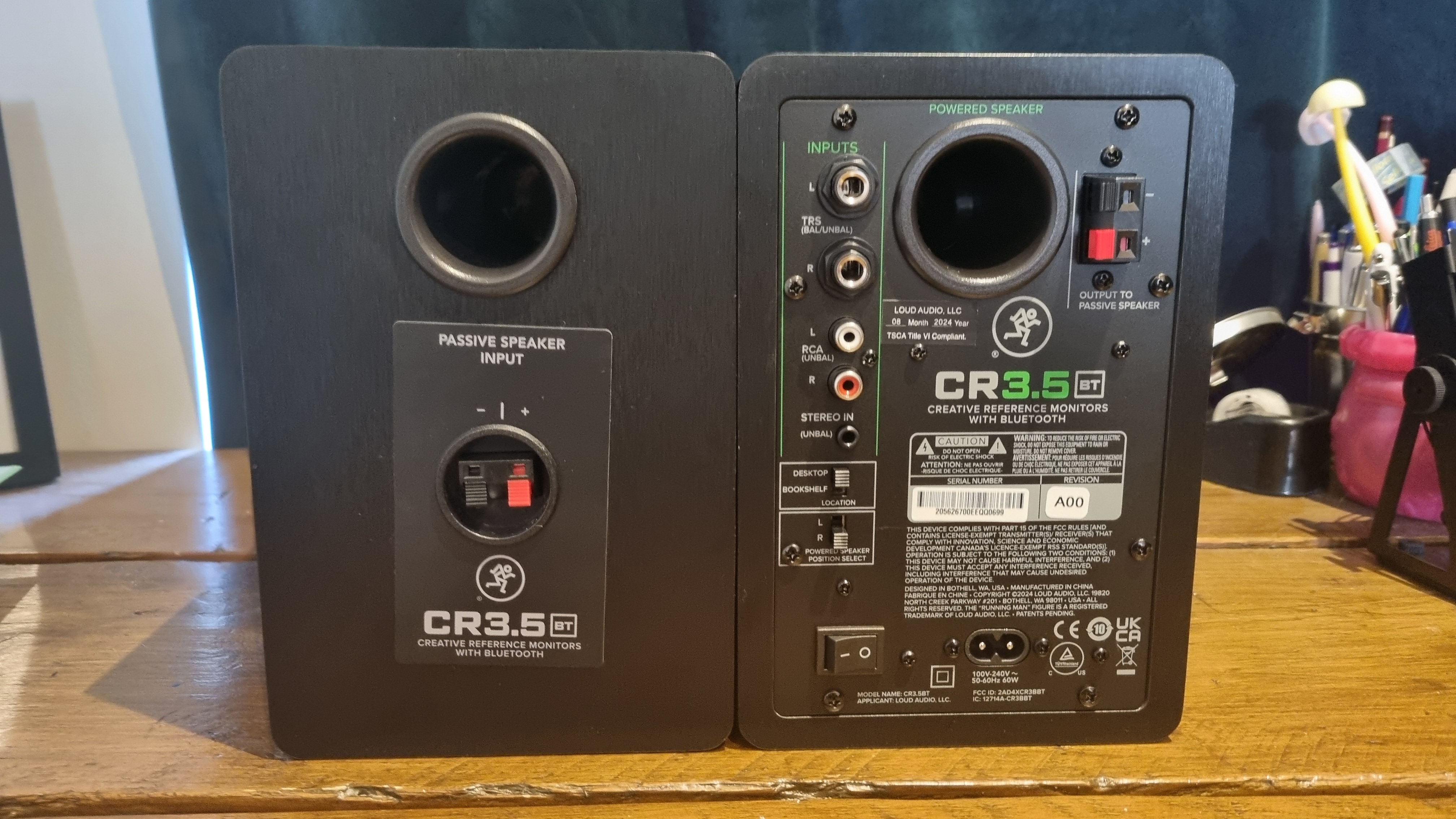

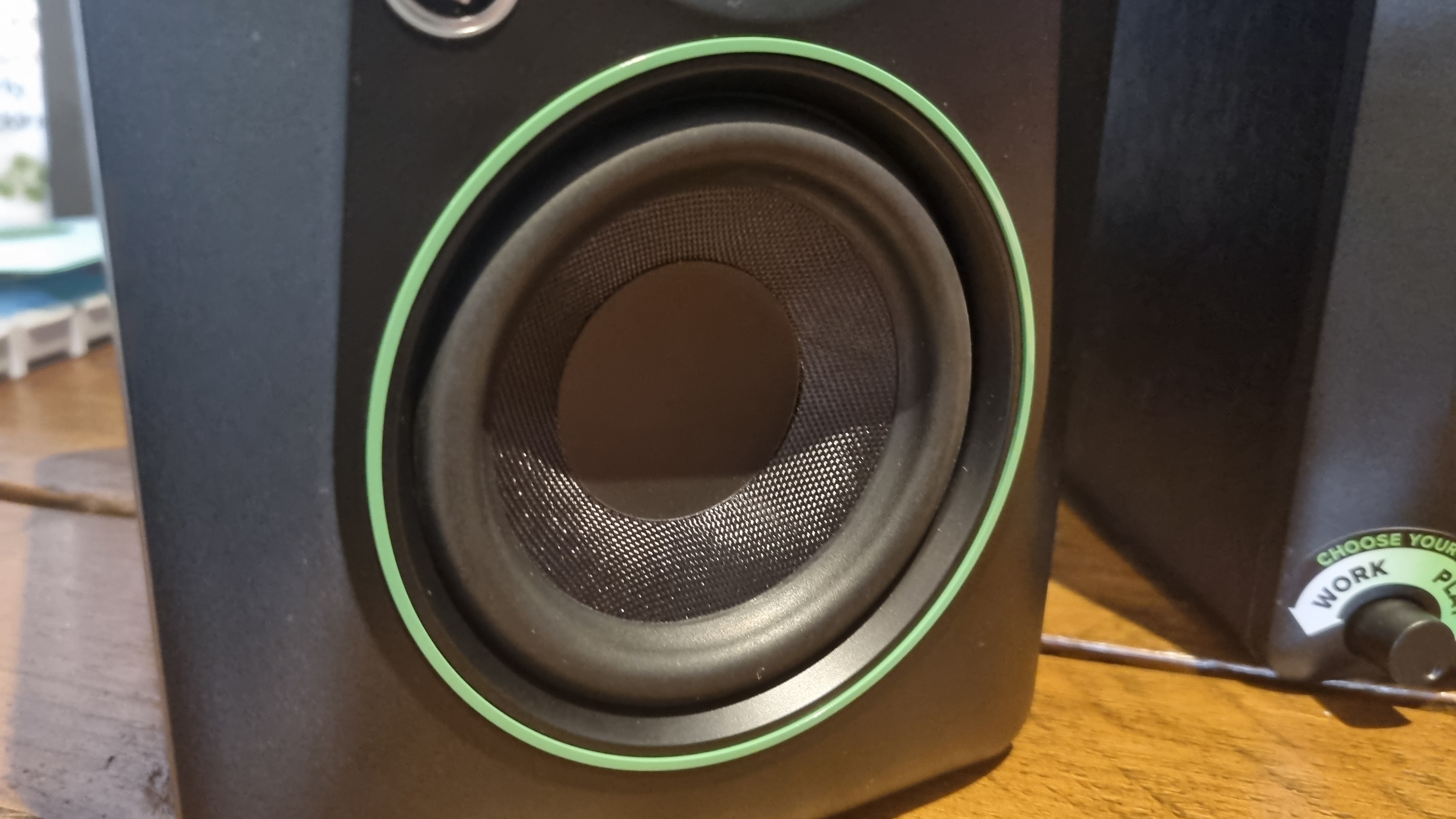
Specifications
Reasons to buy
Reasons to avoid
✅ If you're looking for the best all-rounders: Thanks to a tone-adjustment dial on the CR3.5BT monitors that switches the tuning from a flat response to fun, these are remarkably versatile speakers for all uses. And that optional sub really can shake the room with the best of them.
✅ You want an upgradeable setup in future: If money's tight, you could always grab the excellent $130 CR3.5BTs now and save the $200 sub till later. Or simply enjoy an excellent pair of speakers on their own and skip the sub entirely, if mega-bass isn't your thing.
❌ You want huge amounts of bass for cheap: The CR3.5BTs are very well priced, but they deliver tight bass, rather than room rumbling. You'll want the fairly pricey CR8SBT sub if you plan on removing your pictures from the wall with massive amounts of low end.
Gaming-specific speakers look to be a bit of an endangered species these days, and that's because truly great speaker sets are now available that are capable of doing it all. Enter the Mackie CR3.5BT and CR8SBT subwoofer combo, a combined 2.1 set that easily takes our top spot for the best PC speakers overall.
That's not to say you should rule out the Mackie CR3.5BT reference speakers as an individual purchase, however. These two monitor units are available on their own for a mere $130/£130, and their star feature, a tone dial that adjusts between flat response for studio work and "fun response" (for want of a better term) for gaming, music and more, works exceptionally well.
The CR3.5BTs really are as versatile as they come, switching between studio shenanigans and pleasant, enjoyable audio on the fly with a mere crank of a dial. Should you wish to get even more out of them, they also respond beautifully to a bit of third-party EQ, although it's by no means necessary to enjoy these remarkably accurate units.
As a set of small speakers, the bass they deliver is tight and defined, rather than room-rumbling. Should you wish for the sort of bass that brings the constabulary to your door, you can add in the CR8SBT subwoofer—an absolute Godzilla of a bass unit that's more than capable of damaging the foundations of your home, should you so desire.
The downside? It costs $200/£200 as a separate purchase, and that pushes the price overall of this now-2.1-combo up to the $330 mark, which is fairly pricey for a PC audio setup.
What you're left with, however, is a truly immense slab of audio equipment that really can suit all uses. Okay, so it's not a 5.1 surround system, but take it from us—unless you're dead set on multiplayer gaming footstep-spotting from behind, 5.1 systems really aren't worth the hassle.
Should you choose to opt for the extra sub, it also comes with a control puck that allows you to adjust the bass and speaker levels independently when everything is hooked together. It's a little cheap-feeling compared to the rest of the setup, but you'll likely want to use it to adjust that subwoofer down to reasonable levels to keep it from overwhelming the monitor units.
It really is phenomenally powerful and giggle-inducing in such a way that I couldn't leave it out of this recommendation. Still, it's probably a bit much for many, so if ultra-powerful bass is not your concern, then the Mackie CR3.5BTs on their own make for a fine choice.
I'd still spend the extra cash on that mega woofer though, if I had it spare. Regardless of which combination you pick, the Mackie units deliver everything you could want from a PC audio setup for reasonable money. That makes them the best PC speakers by far, and the ones I'm happy to hang my hat on at the top spot of this guide.
Read our full Mackie CR3.5BT + CR8SBT subwoofer review.
The best budget PC speakers
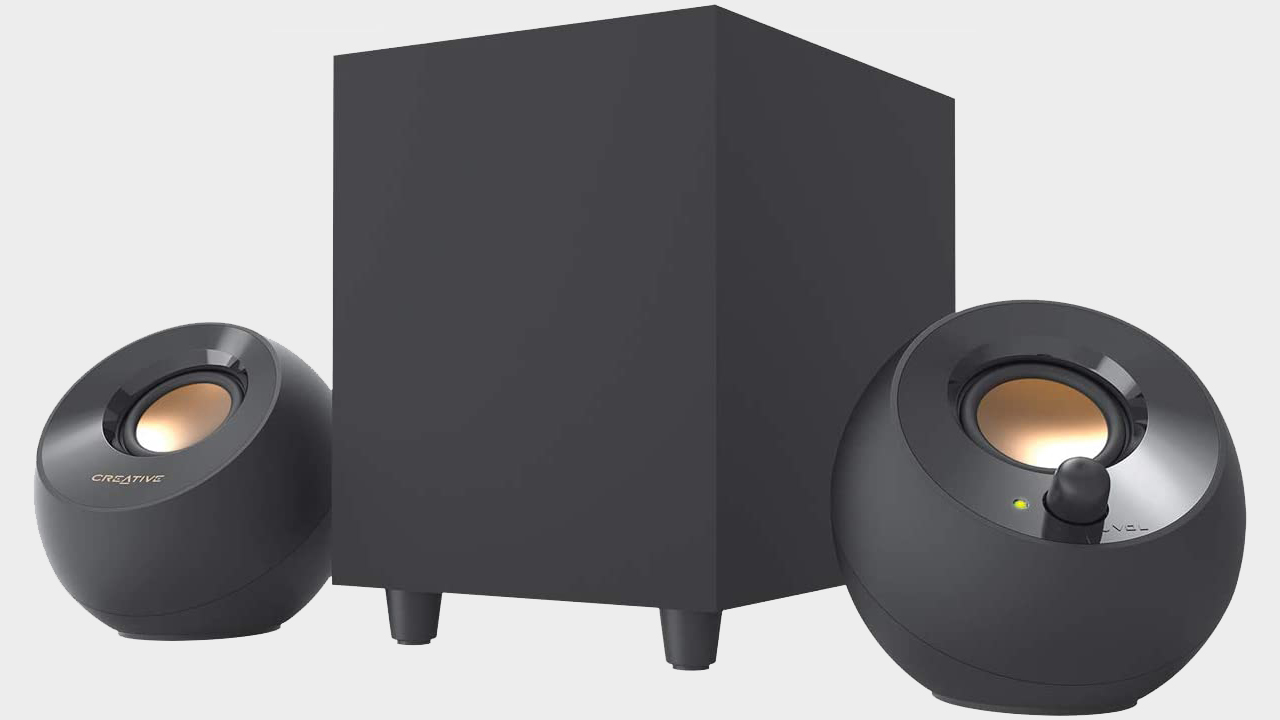
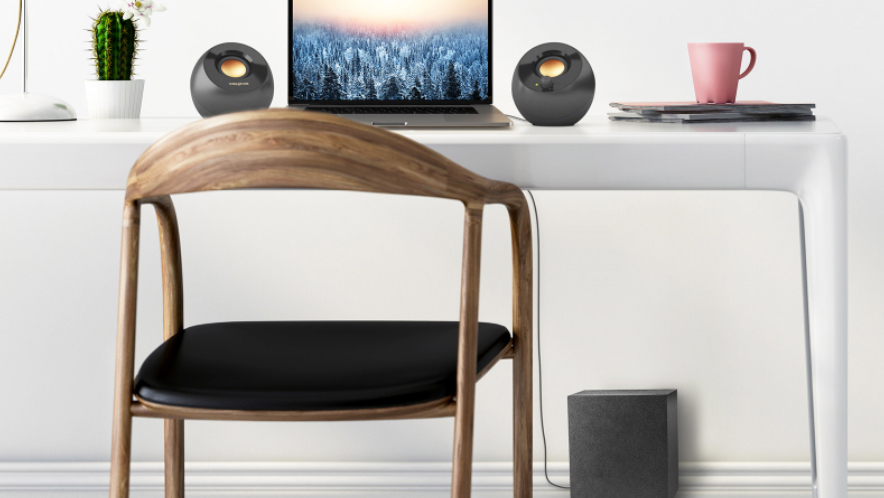
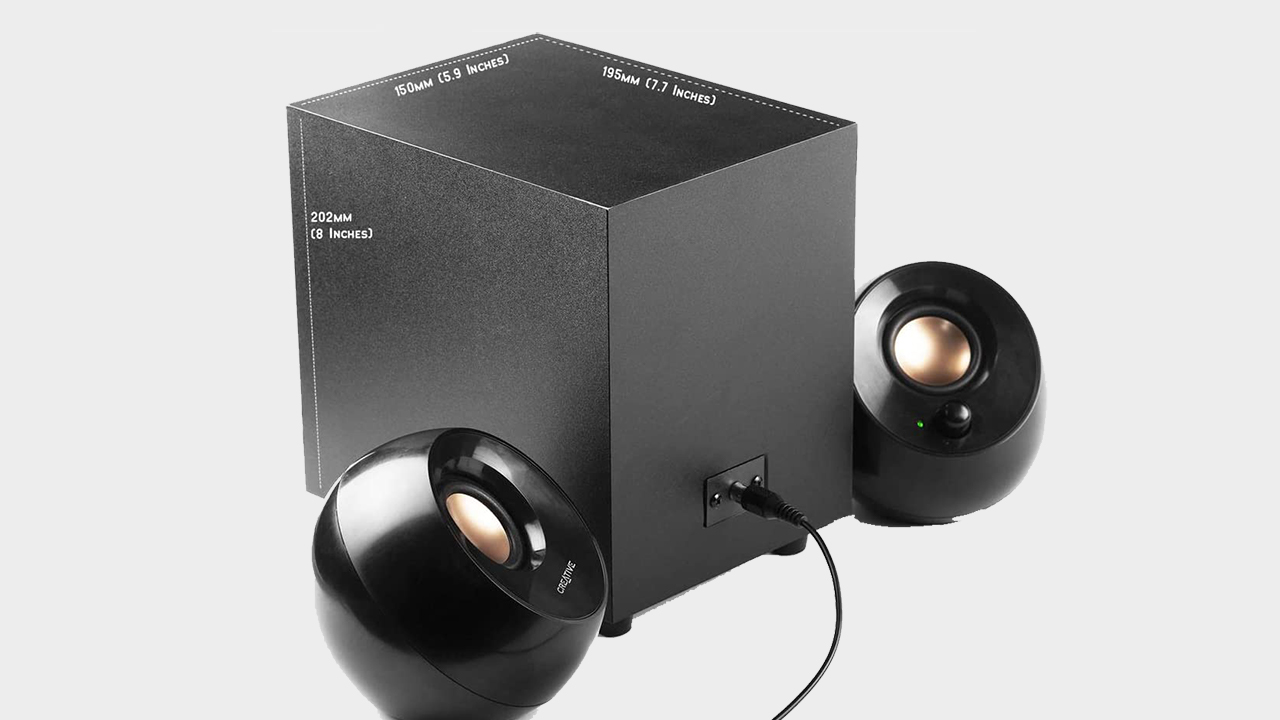
2. Creative Pebble Plus
Our expert review:
Specifications
Reasons to buy
Reasons to avoid
✅ If you're on a budget: Normally, we yell "how much?" when we spot something pricey. Here, we yell it because the Creative Pebble Plus are remarkably cheap.
✅ If you still want great audio clarity from cheap speakers: While they aren't particularly bass heavy, the Pebble Plus offer very clear and distinct audio quality that's perfect for a spot of YouTube or enjoying otherwise dialogue-heavy media.
❌ If you like a lot of bass: Despite the included subwoofer, the Creative Pebble Plus don't quite have the gumption to provide room-shaking low-end fun.
When you're out shopping for PC speakers on a budget, it's easy to be overwhelmed by choice. It doesn't help that reliable brands have multiple options in the same price range. The low-end differences can be minimal, but the Creative Pebble Plus speakers stand apart from the competition with their big sound despite their compact size. That makes them my pick for the best budget speakers, as nothing gets close to their level of quality for the money.
With a total power output of 8 W, these speakers pump out crisper audio better than competitors using two to three times the amount of power. They won't produce the loudest sound around, but there's little distortion even with the volume maxed out, and at more reasonable volumes, they get the job done well. The only complaint here is a lack of bass control to complement the convenient volume knob located on the right speaker.
The Pebble Plus speakers may lack some raw oomph, but they make up for it in clarity. This is why we highly recommend these speakers for students and those who move around a lot, as the speakers are small enough to fit on any cramped desk surface. They're easily the most portable speakers we've tried and perform best in a smaller bedroom or office.
Like any other pair of speakers at this sort of entry-level price range, the Creative Pebble Plus set is easily shamed by a mid-range set like the Logitech Z407. You're missing out on wireless connectivity, too, and there are lots of fiddly, easily tangled wires to deal with if you're moving around a lot. However, these speakers are the clear winner for roaming gamers on a tight budget.
For this sort of price, you want something better than a lot of the no-name brands, while still keeping the hole in your pocketbook as small as possible. With that mission in mind, there is no better option than the Creative Pebble Plus.
The best mid-range PC speakers


3. Logitech Z407
Our expert review:
Specifications
Reasons to buy
Reasons to avoid
✅ If you want powerful sound for a lower price: At a $110 MSRP, these loud and distinctive speakers cost far less money than you might expect.
✅ If you want wireless control: The hockey puck like wireless volume knob is a great feature, and adds some real flexibility to your speaker setup.
❌ If you need lengthy cables: The included cables here are a little short, which is a shame if you were planning on placing the speakers some distance apart.
If you don't want to stretch your budget to the full Mackie CR3.5BT + CR8SBT speaker set, Logitech's much more tame Z407 set offers a great alternative for less money, quickly becoming our top pick for mid-range speakers as a result. They're effectively a similar set of two tweeters and a subwoofer, but ditch all the gamer stylings and lights of the fancier kit.
The Logitech Z407 set pretty much wins the award for most deceptively awesome computer speakers around. This 80 W speaker system connects via Bluetooth, 3.5 mm headphone jack, or Micro USB, so you can easily connect to it with your phone, gaming laptop, or PC. Keeping with the wireless theme, we fell in love with the wireless control knob, which lets you control your media with satisfying spins.
That's one of the key benefits over the much cheaper Creative Pebble Plus, but don't ignore their simple and effective design. Logitech's two tweeters come with small stands for your desk, and the subwoofer is compact enough to not take up too much space under your desk.
What was not satisfying was the unusually short 4ft cables, which limit how you can set them up. However, being able to lay the speakers vertically or horizontally is a nice touch. The sound achieved surprisingly balanced audio for a speaker set asking for this much cash—a strong yes for anyone looking to upgrade their current dinky desktop speakers.
The speakers here are substantial, without being overpowered, and that sub is capable of excellent bass without overpowering the tweeter units. Balance between smaller units and a big, weighty subwoofer is important, and this set does a good job of keeping itself in line. Still, crank it to the guns, and you'll still rattle your fillings, which any set of speakers at this price should be capable of to some degree.
That makes the Logitech Z407 our top pick for mid-range speakers. Not too pricey, well-built, and delivers great sound. That'll be that, then!
The best gaming soundbar
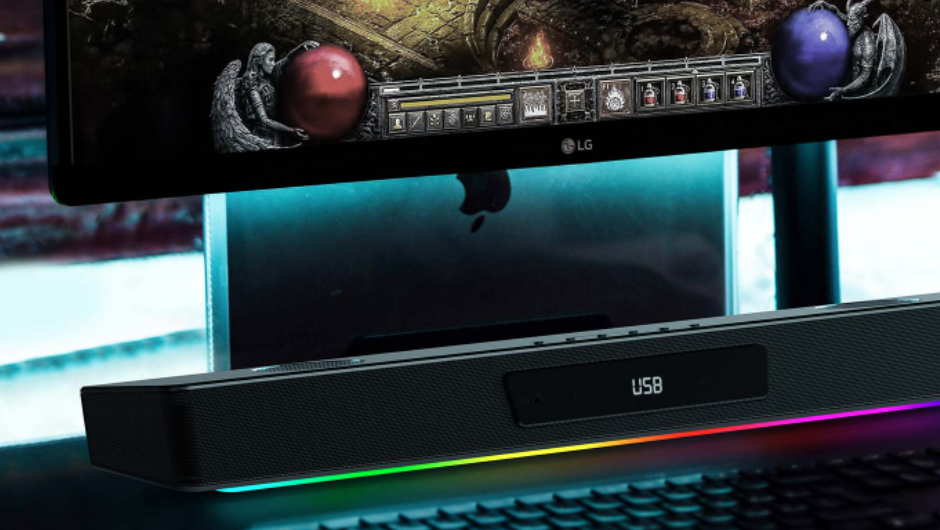
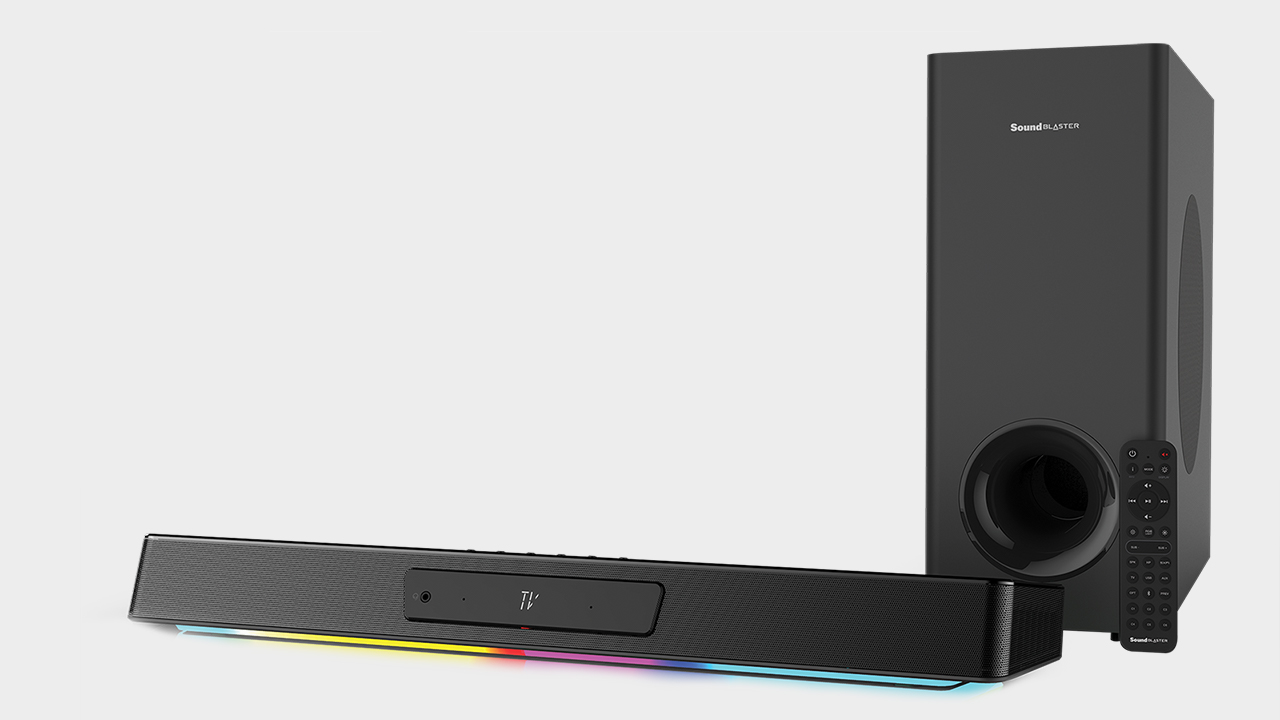
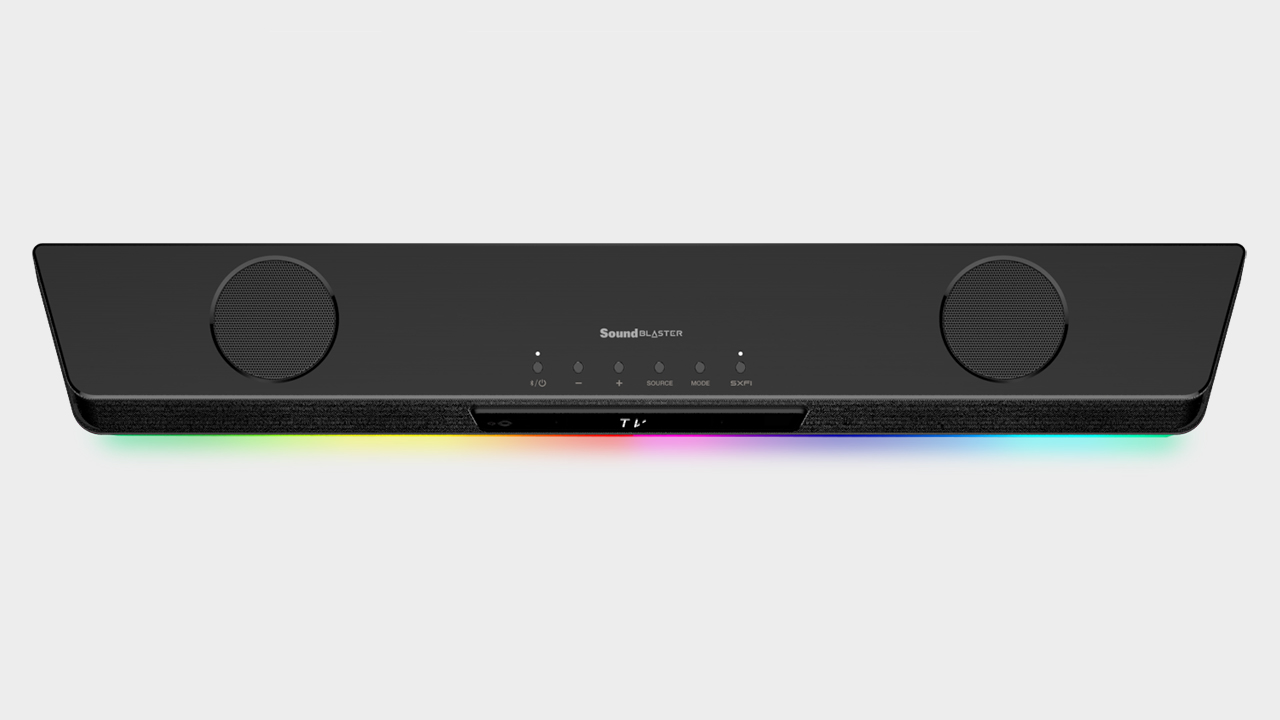

4. Creative Sound Blaster Katana V2 Soundbar
Our expert review:
Specifications
Reasons to buy
Reasons to avoid
✅ If you want versatility: With a plethora of connectivity options and a flexible sound that suits many purposes, the Katana V2 aims to cover all bases, and mostly succeeds.
✅ If you want a soundbar with powerful bass: Thanks to the addition of a subwoofer, this setup packs a mean punch.
❌ If you're going to primarily use Bluetooth: While we had some issues with the Bluetooth connection, it did sort itself out eventually, but it might be a sticking point if that's your primary concern.
❌ If you're on a budget: At a $350 MSRP, this is not a cheap setup. If you're just looking for great audio, this might be a bit more than you really need.
It's been a while since we had a soundbar on this list. Mainly because many soundbars out there are tuned and made for TVs, not PC gaming. Often, the soundbar is too big for your desk or too small, and the sound lacks any oomph. However, that's not the case here, and the Sound Blaster Katana V2 earns a top spot among computer speakers during our time testing it.
The Sound Blaster Katana V2 is a significant upgrade from last year's model with a sleeker look and, more importantly, better-sounding tweeters and subwoofer. They're well-placed to face your ears while gaming at a desk and are pretty powerful.
The subwoofer's 5.25-inch driver provides the V2 that little kick in the butt you want when you're playing shooters, and still offers a decent enough soundscape for listening to music. Thanks to its many connectivity options, it can also be plugged into pretty much anything you own, which separates it from the Razer Leviathan soundbars we've tested, which are more limited on connectivity.
You are sorely mistaken if you think this soundbar would miss out on RGB lights, however. The Katana V2 has bright RGB lighting that accents the bar's underside and adds a little flair. Though this is quite a large unit for any desk, it might be a tight fit if you don't have much room to spare for the nearly 24-inch soundbar.
The downside to the Katana V2 is the hefty $350 price tag, which makes it more expensive than most gaming soundbars you can buy right now. Another problem is that setting up premium features, like SXFI and Battle Mode, has to be tweaked through a cumbersome app. Some nagging Bluetooth connectivity issues were also a bit of a pain, but they ironed themselves out eventually. Weirdly enough, the fix was cycling through different inputs every time.
The Sound Blaster Katana V2 is a great soundbar, all things considered. It's small enough to sit comfortably on a decent-sized desk without taking over and loud enough to easily be featured as your living room sound system. While it's not wireless like the BlueAnt Soundblade, it's got enough heft and flexibility to stand out amongst the crowd, which makes it the best soundbar we've tested so far.
The best wireless gaming soundbar
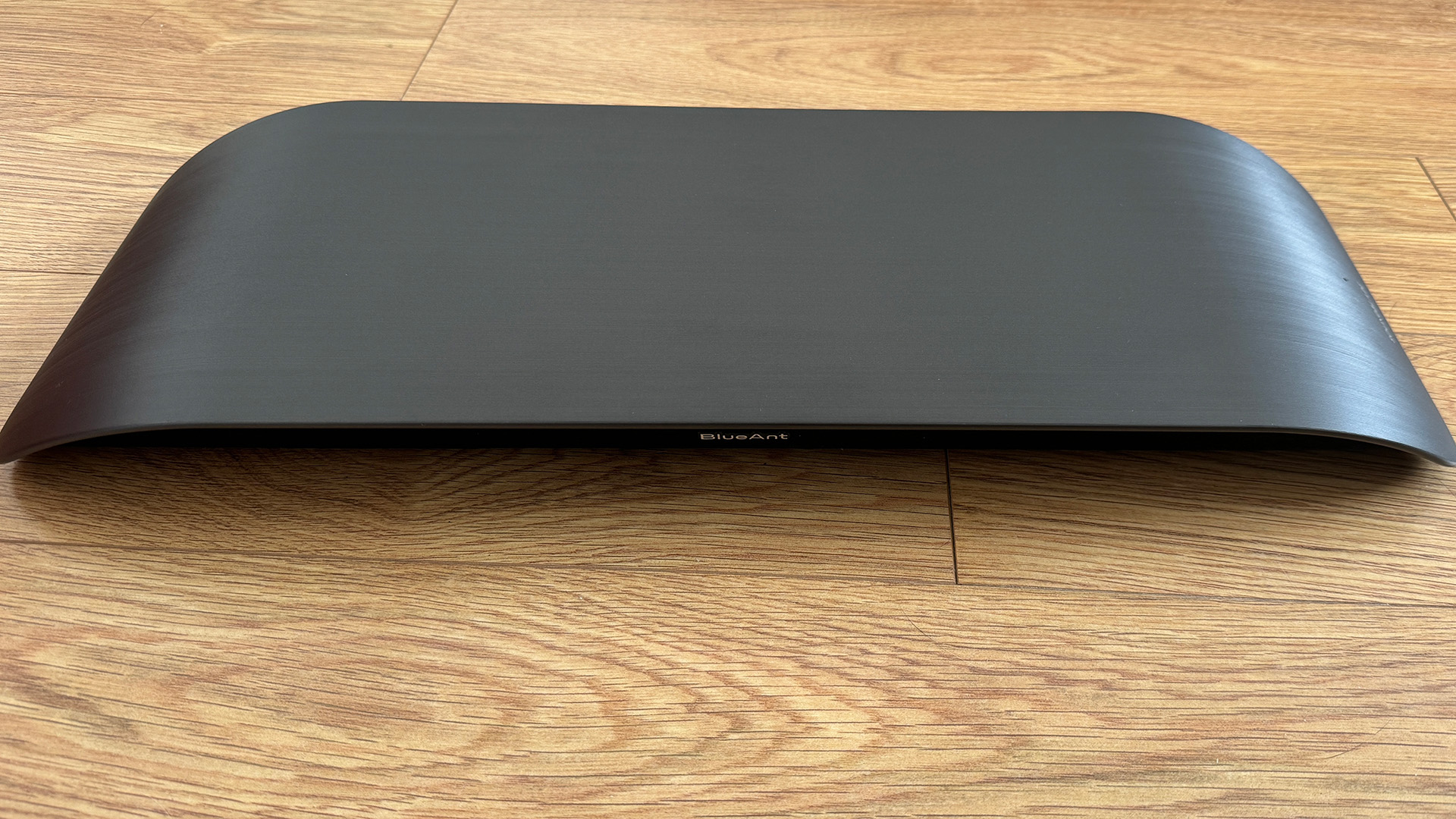
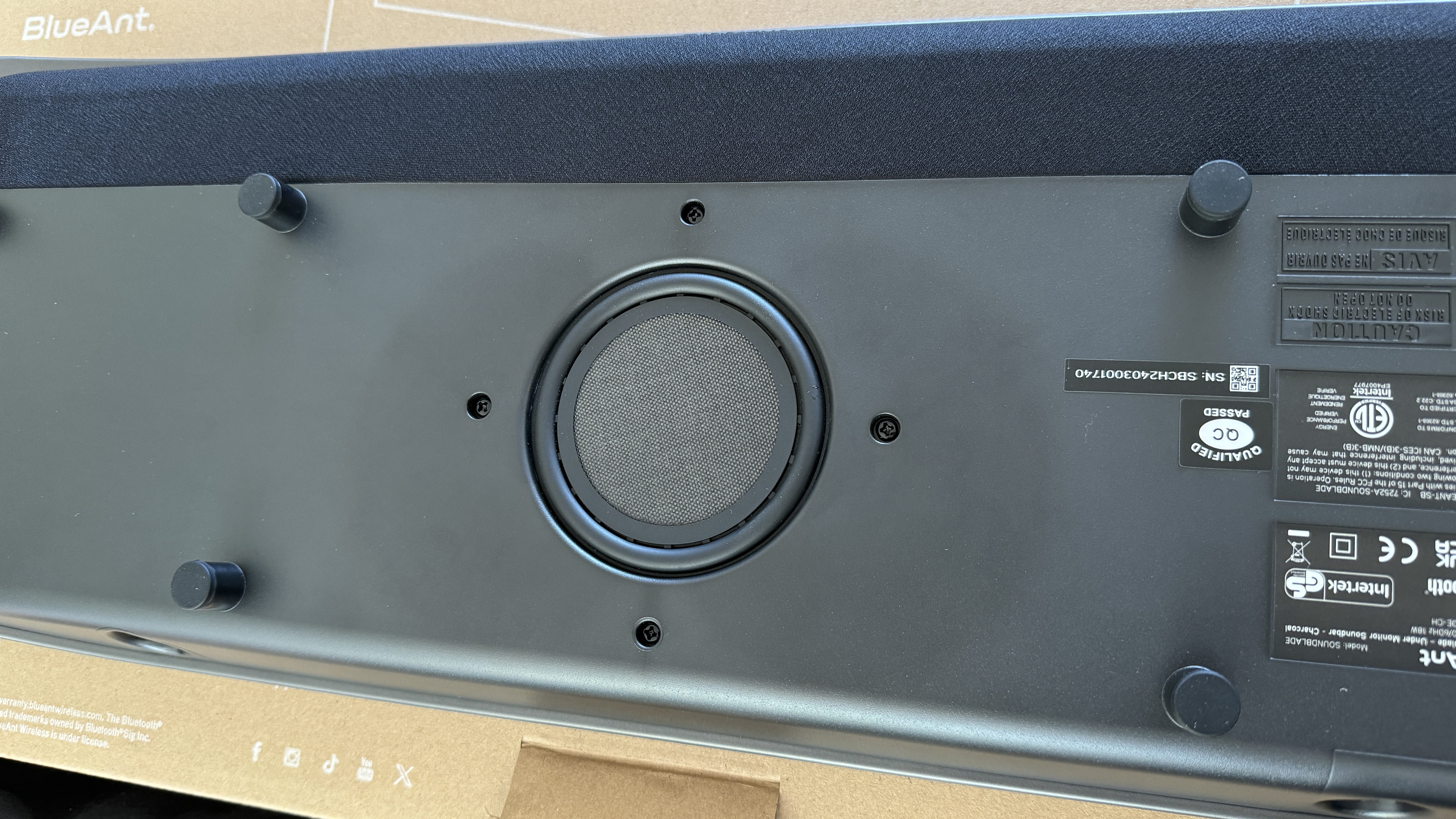
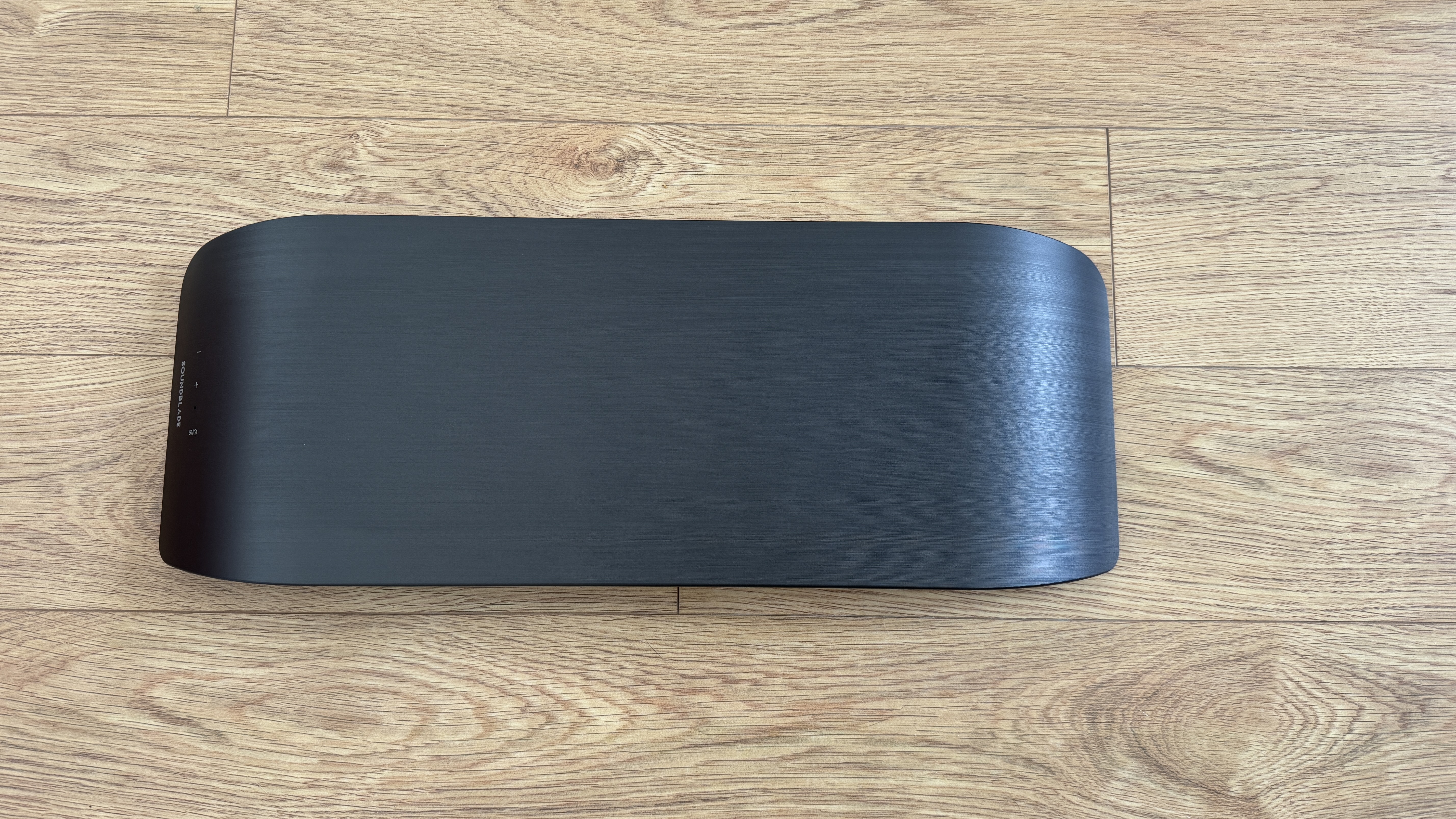
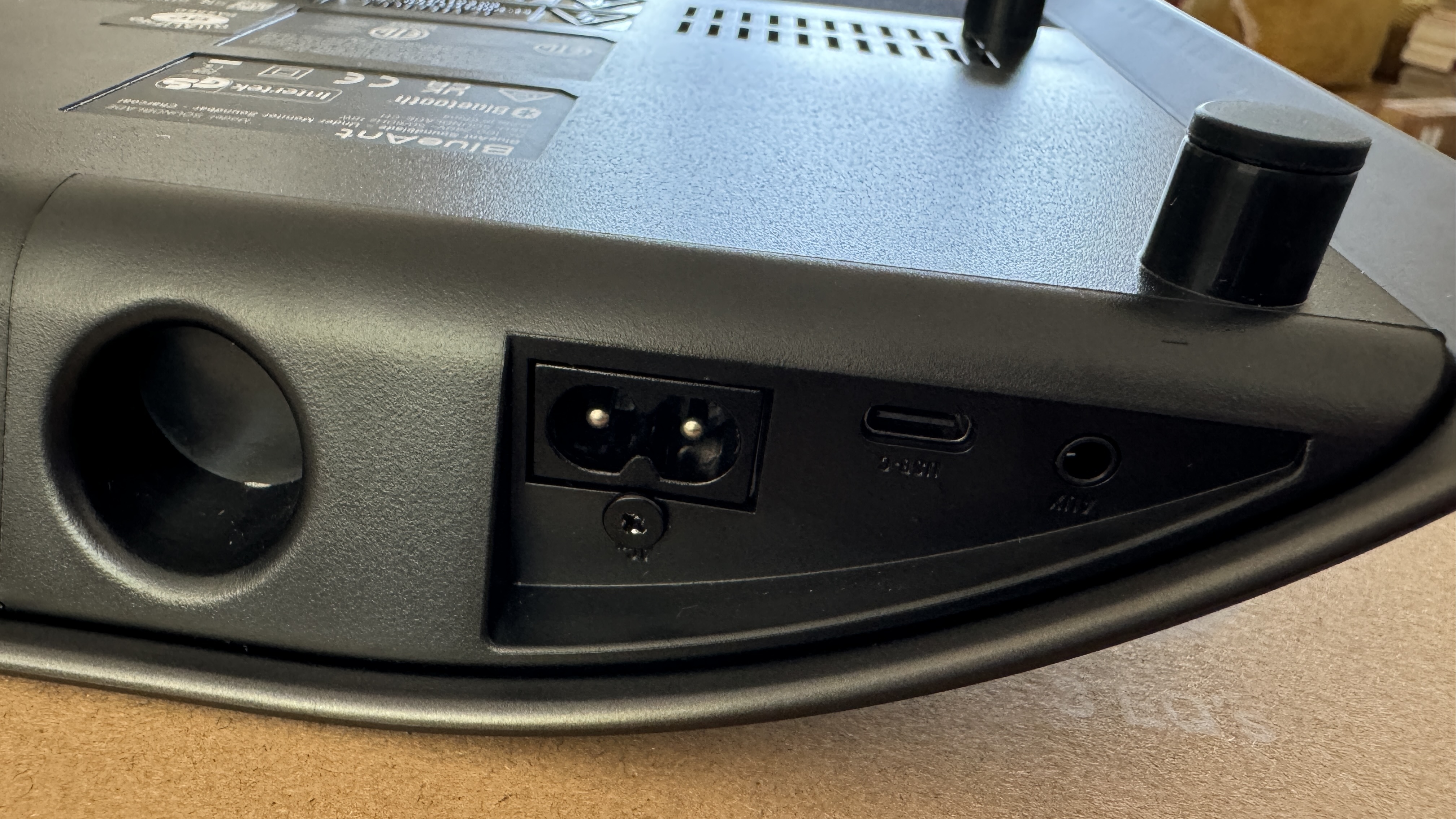
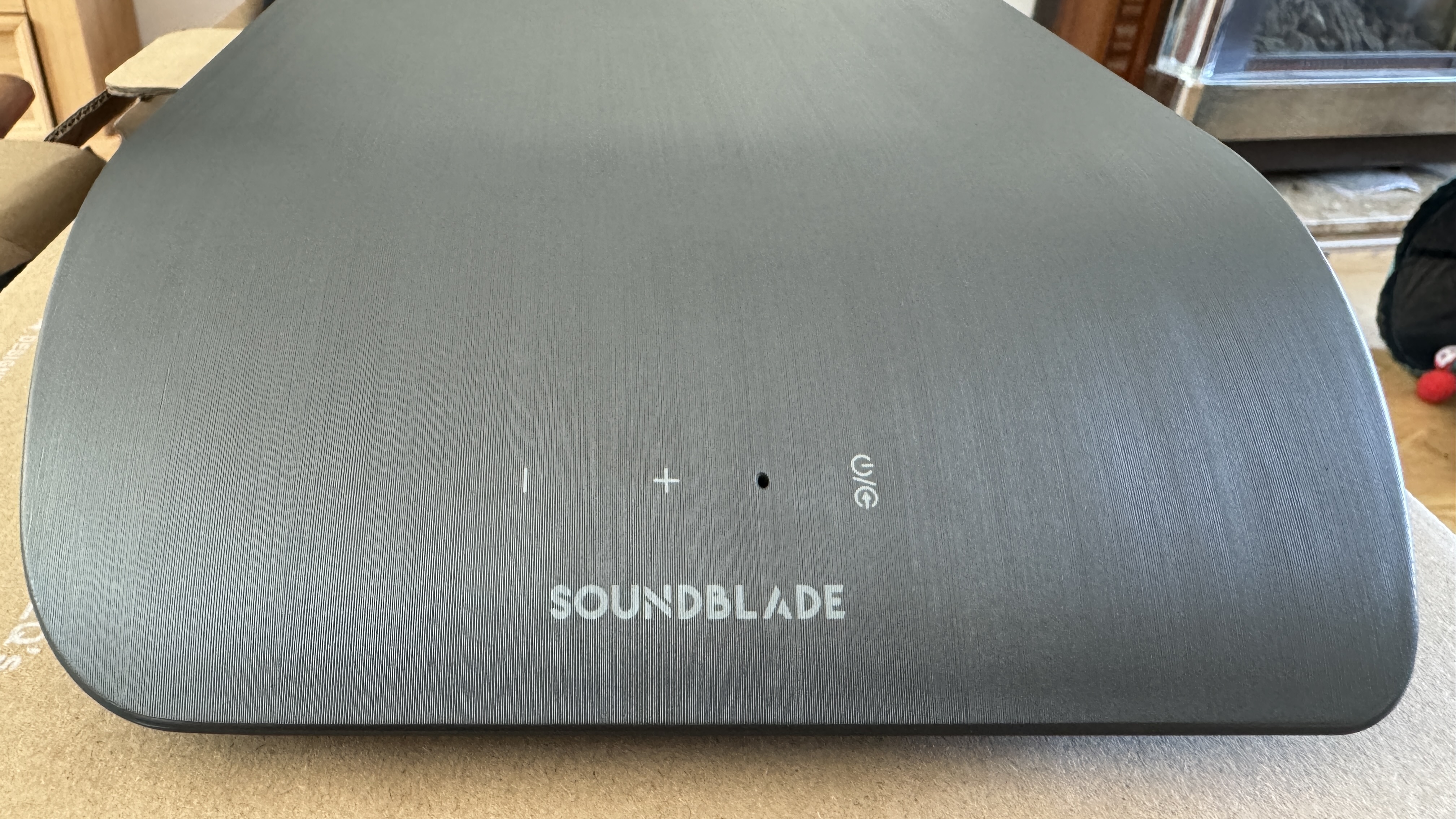
Specifications
Reasons to buy
Reasons to avoid
✅ You want versatility: With a range of connectivity options plus powerful performance for both gaming and music, the Soundblade really does tick a lot of boxes for a great soundbar.
❌ You don't have a lot of space under your monitor: If you're the sort of person who arm-mounts your displays, you'll have no problems. However, those with a V-shaped desk stand or similar might not have space for something with this large of a footprint.
The BlueAnt Soundblade manages to be sleek, compact, and yet substantial at the same time. Wireless soundbars are legion at this point, but this model in particular is our top pick by virtue of its powerful audio performance and excellent connectivity options.
First and foremost, let's talk wireless. The Soundblade utilises a Bluetooth 5.3 connection that we found was nearly as good as the wired connection, which frees up the unit for all sorts of placement opportunities.
And that's just as well, as while the casing is sleek and good-looking, it does have a large desk footprint. If you arm-mount your monitors, you should have no issues, but if you use desk stands, it's worth carefully measuring to make sure it'll fit between your display and your keyboard.
Of course, all this measuring and wireless lark would be pointless if this soundbar didn't, y'know, sound good. There are no worries on that front, though, as the depth of audio and sheer power on offer here is impressive.
While you're missing out on the full 5.1 surround experience, have no fear—the 2.1 hijinks on offer are excellent. The included remote allows you to switch between music, movie, and gaming modes, although we found that the latter delivered the most pronounced bass and most versatile sound overall.
While the remote is handy if you're listening from across the room, the built-in touch controls are excellent for their primary use—sitting on your desk. Unlike a lot of fiddly touch control setups we've tested, these are very easy to use, and we didn't find a lack of physical buttons a disappointment, which is a rarity.
You've got a central, under-soundbar subwoofer here that really is capable of delivering some weighty bass, along with two neodymium drivers that offer great clarity and positional sound. That in-chassis integration is seamless, and the Soundblade really can deliver a surprising amount of power. Nuance is still there, though, making for an immersive experience when playing games.
Bullets will whizz, explosions will rumble, and reverb will, well, reverberate. It's an impressive sound show in a sleek box, and for $200 MSRP, a pretty well-priced one at that. If you don't need the wireless capabilities, it's worth checking out the Creative Sound Blaster Katana V2, but the Soundblade is definitely a worthy competitor, regardless.
Wireless soundbars have come a long way, and while you might have to reorganise your desk setup to fit it in, the BlueAnt Soundblade certainly earns its place as the best wireless soundbar we've tested to date.
Read our full BlueAnt Soundblade review.
The best bookshelf speakers

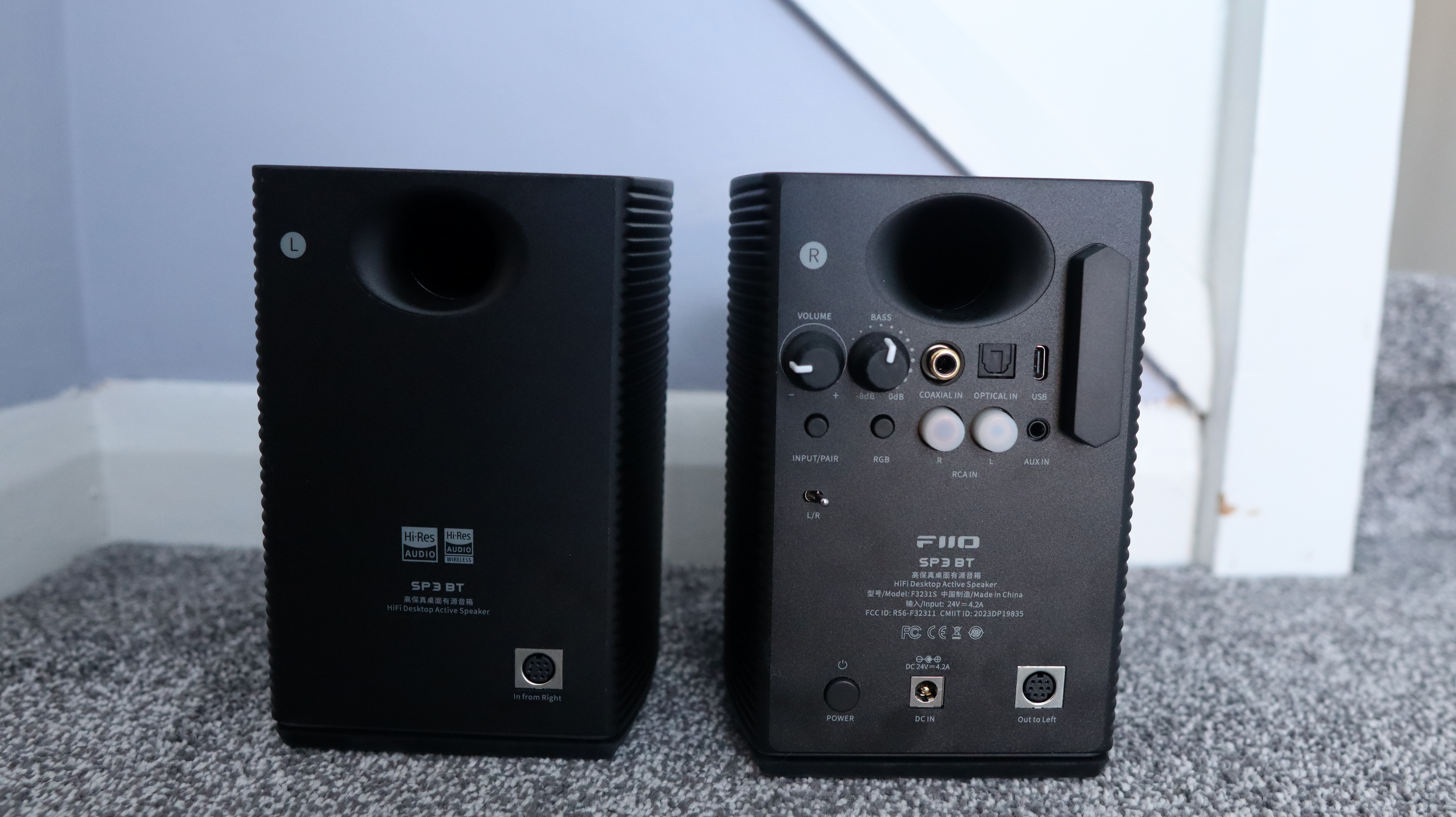
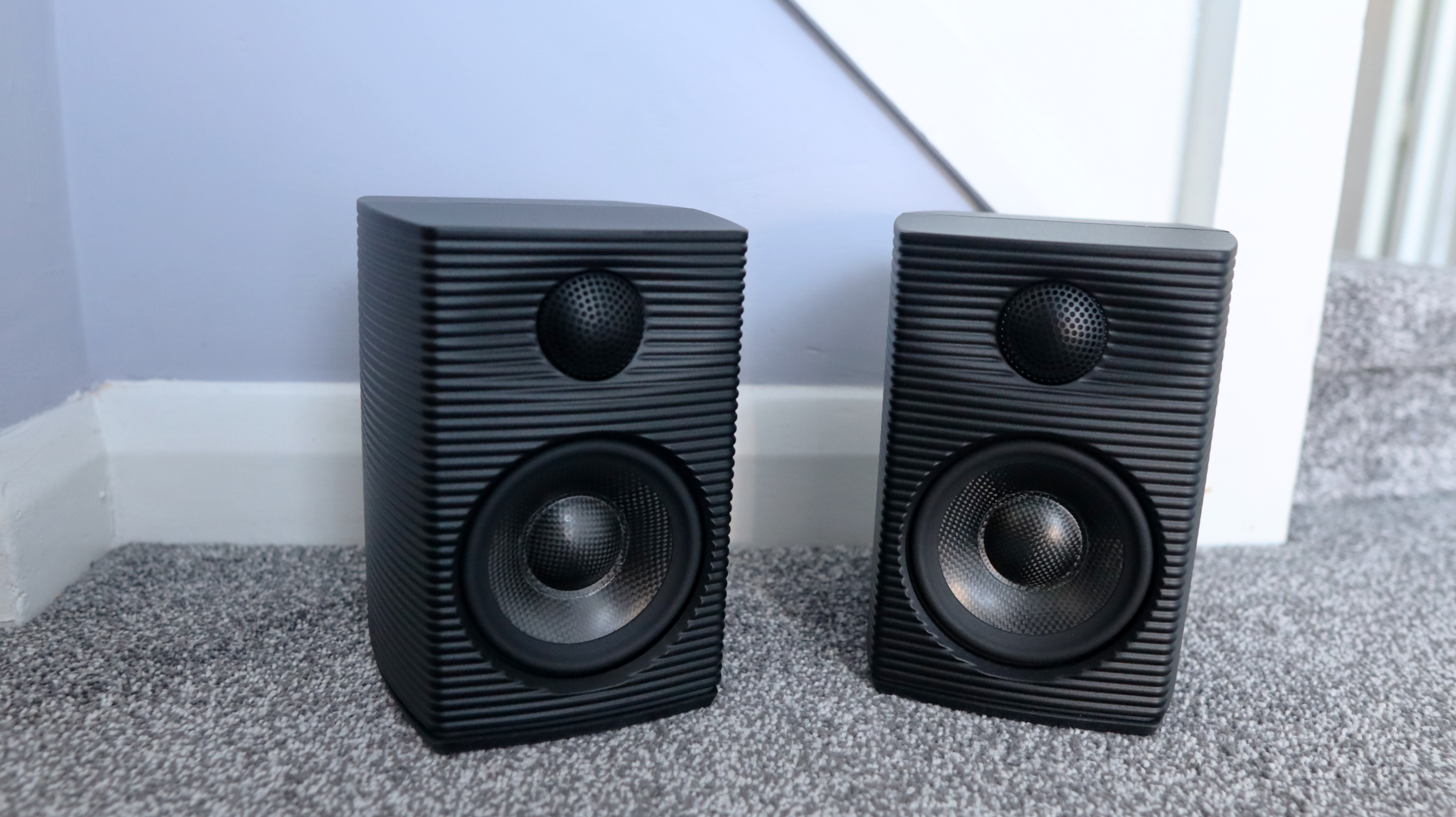
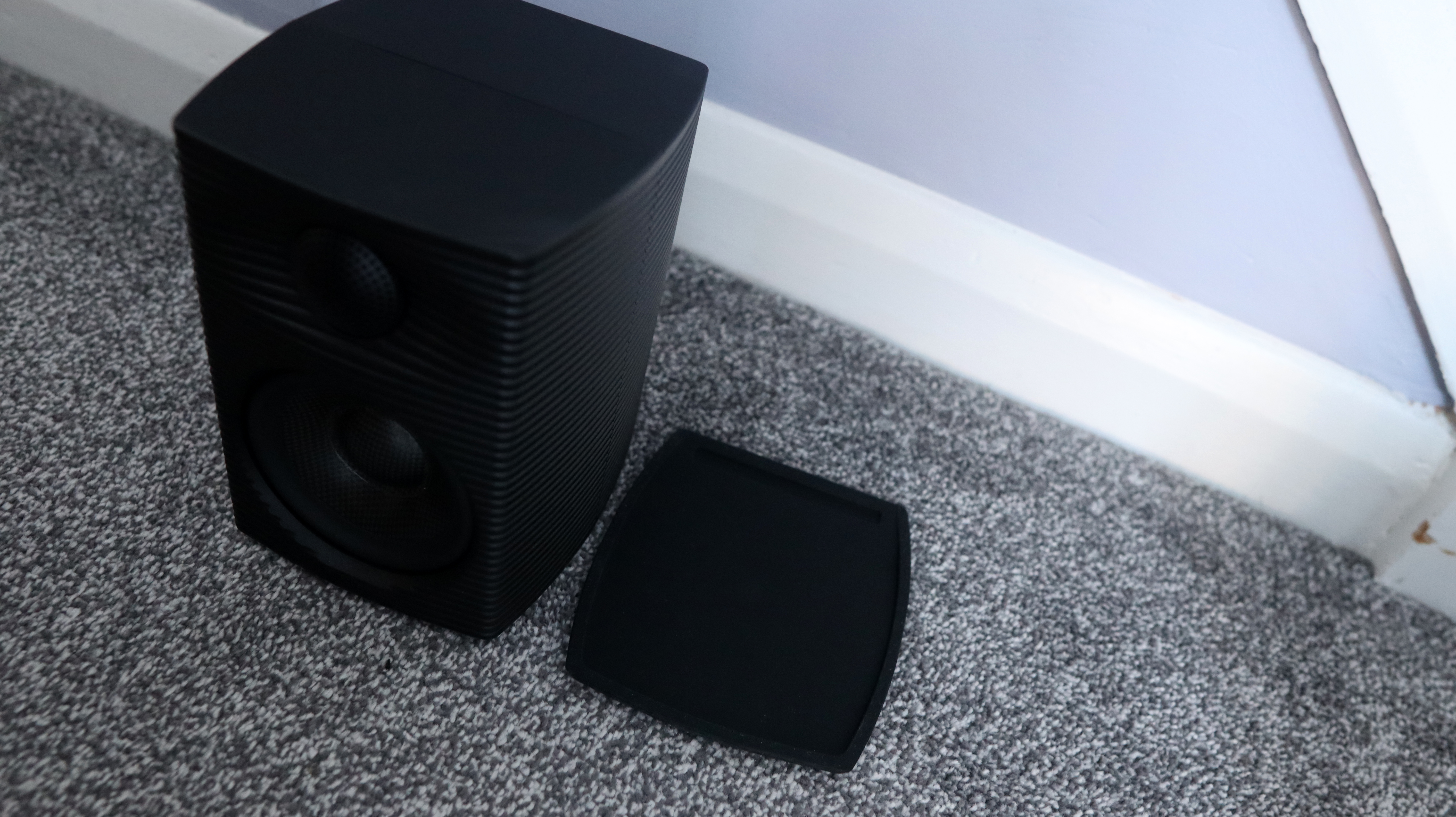
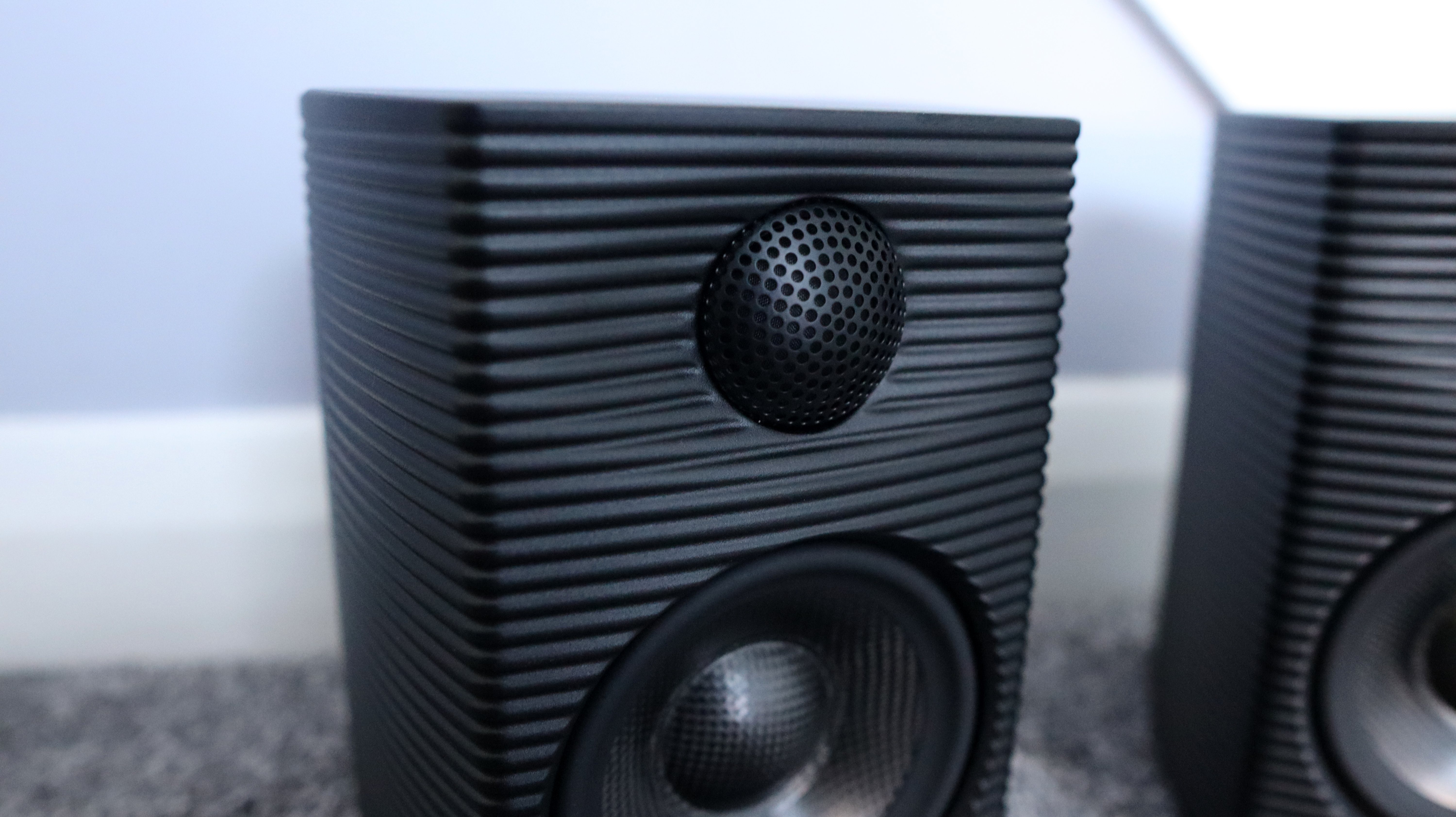


Specifications
Reasons to buy
Reasons to avoid
✅ You want rich audio: the SP3 BT shines across all manner of content, be that games or music.
❌ You want more low end: the SP3 lacks some oomph in the low-end compared to some gaming speakers, which are known for kickin' bass.
Looking for the best bookshelf speakers? You'll want the FiiO SP3 BT. Within ribbed cabinets sit a pair of speakers, a 1-inch tweeter and 3.5-inch midwoofer, able to generate rich and enticing audio for both games and music.
With various options for connectivity on the FiiO, wired and wireless, you'll be able to put them to good use no matter what you intend to use them for. Obviously, they'll work great as a backup to your gaming PC, sitting proudly on your gaming desk on either side of your monitor. Though you could just as easily put them up on a shelf and connect via Bluetooth to your phone for some casual tunes or, dare I say, a party?
If you do connect via your phone, you can also employ the aid of the FiiO app to apply an EQ and update the firmware. Otherwise, volume is controlled via a small dial on the rear, as is the bass response.
We described the audio out of these cabinets as "sublime" as well as "crisp and clear". All good adjectives for speakers, I assure you. Whether tested with music or playing some good ol' fashioned vidya games, the SP3 delivers surprising amounts of low-end oomph for a set of speakers without a subwoofer.
While we wouldn't call the SP3 small by any means, the lack of a subwoofer does mean fewer cables to mess with if you're moving these around frequently. That shouldn't be an issue for these speakers either, as they're made from die-cast aluminium.
While you can purchase competitive gaming speakers at this sort of price point, we really appreciate the crisp audio that the SP3 delivers. It offers up a precise, clear, and excellent sound profile. Also, you won't miss out on extremely important gaming features such as RGB lighting, which the SP3 offers around its base. Well, ok, not that important, but it's still a nice feature to have.
You can spend as much or as little as you want on bookshelf speakers, from $50 budget models to $1,000+ audiophile units. The FiiO SP3 exist in a space where they're not cheap, but they deliver excellent audio that sounds every bit as good as you'd expect for the money.
Flexible, powerful, good-looking looking and tasteful—that's about all you want out of a set of bookshelf speakers, and the FiiO SP3 BT is the best set we've tested to date.
Read our full FiiO SP3 BT review.
The best reference speakers
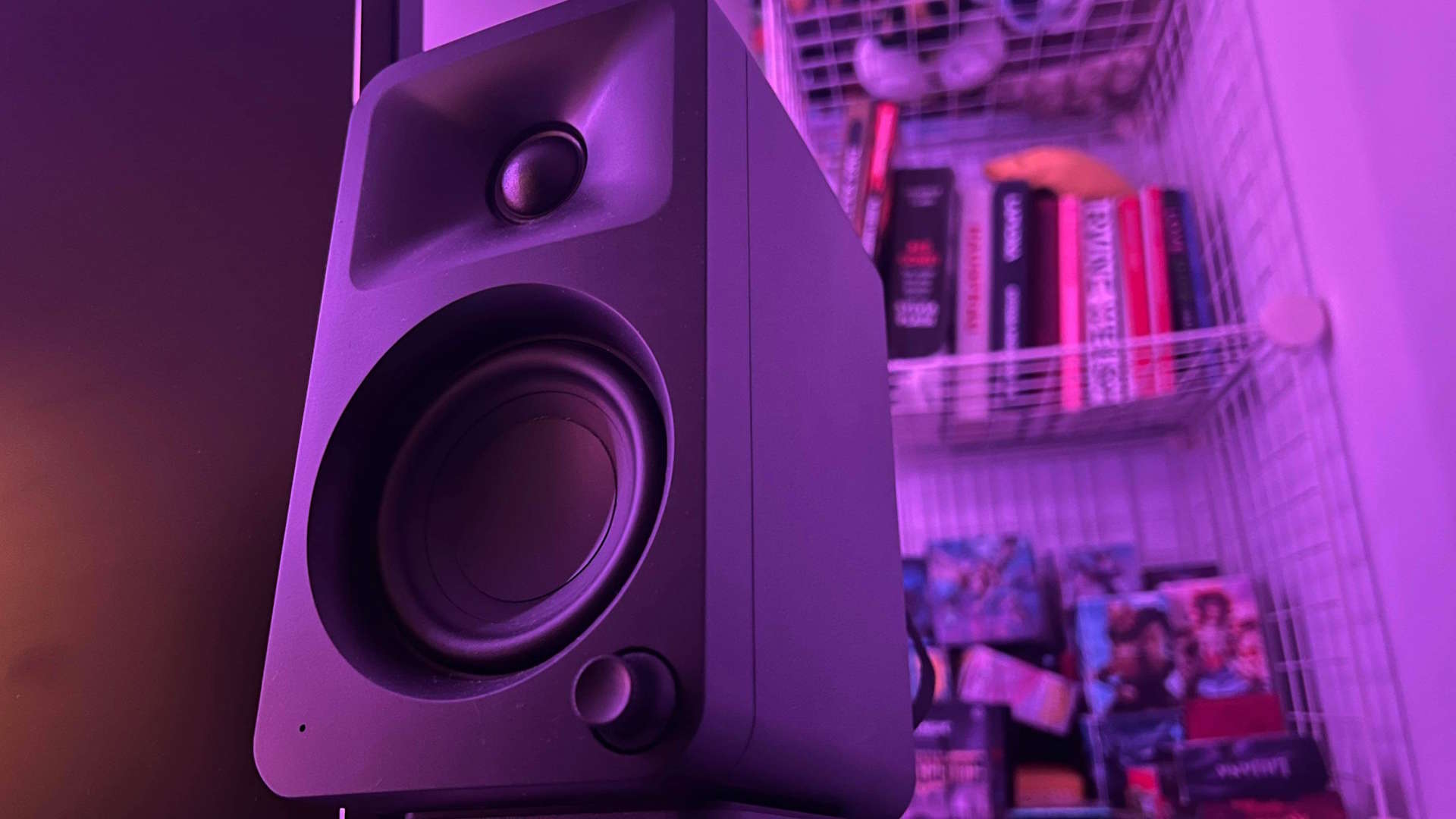
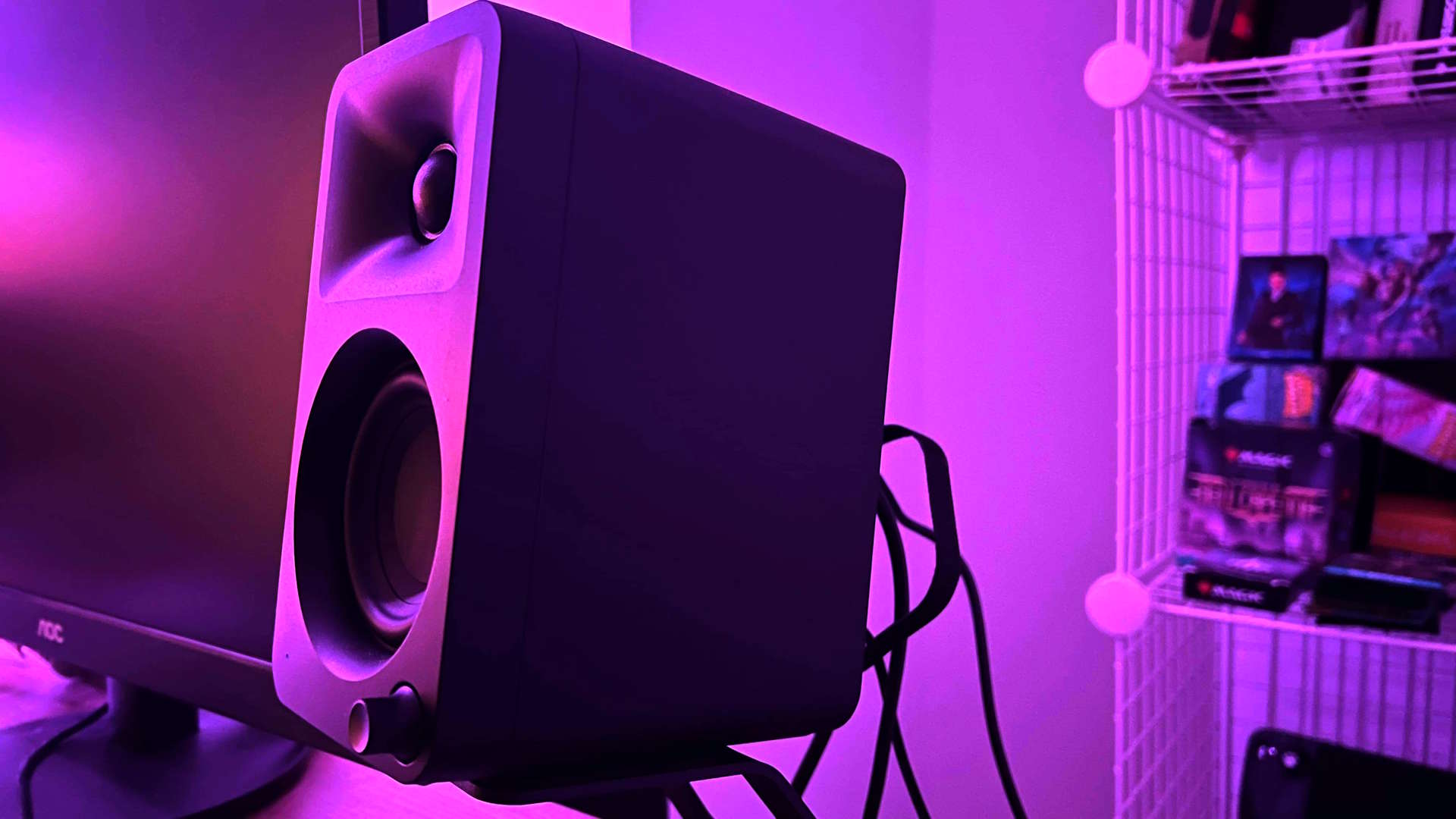
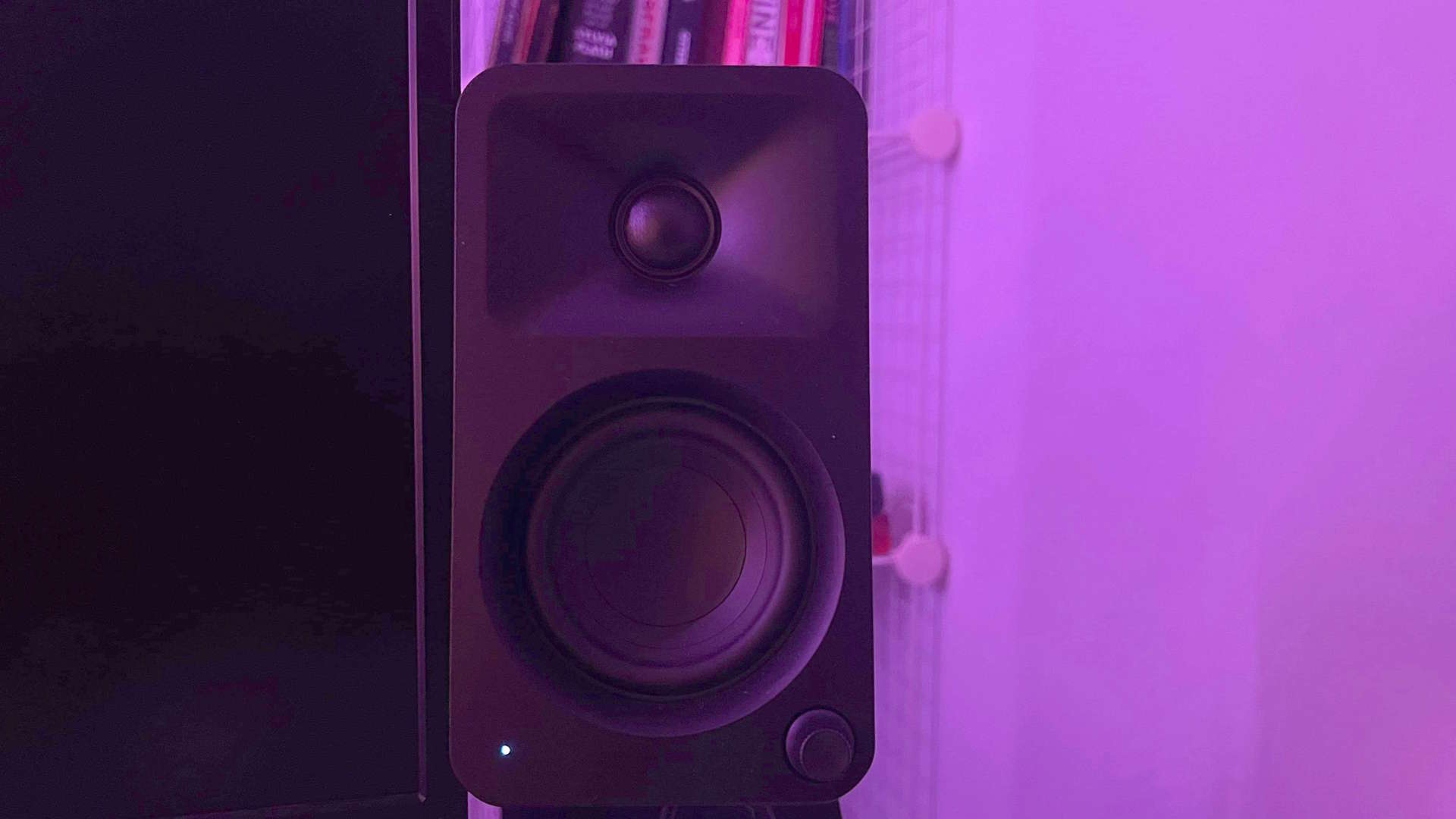
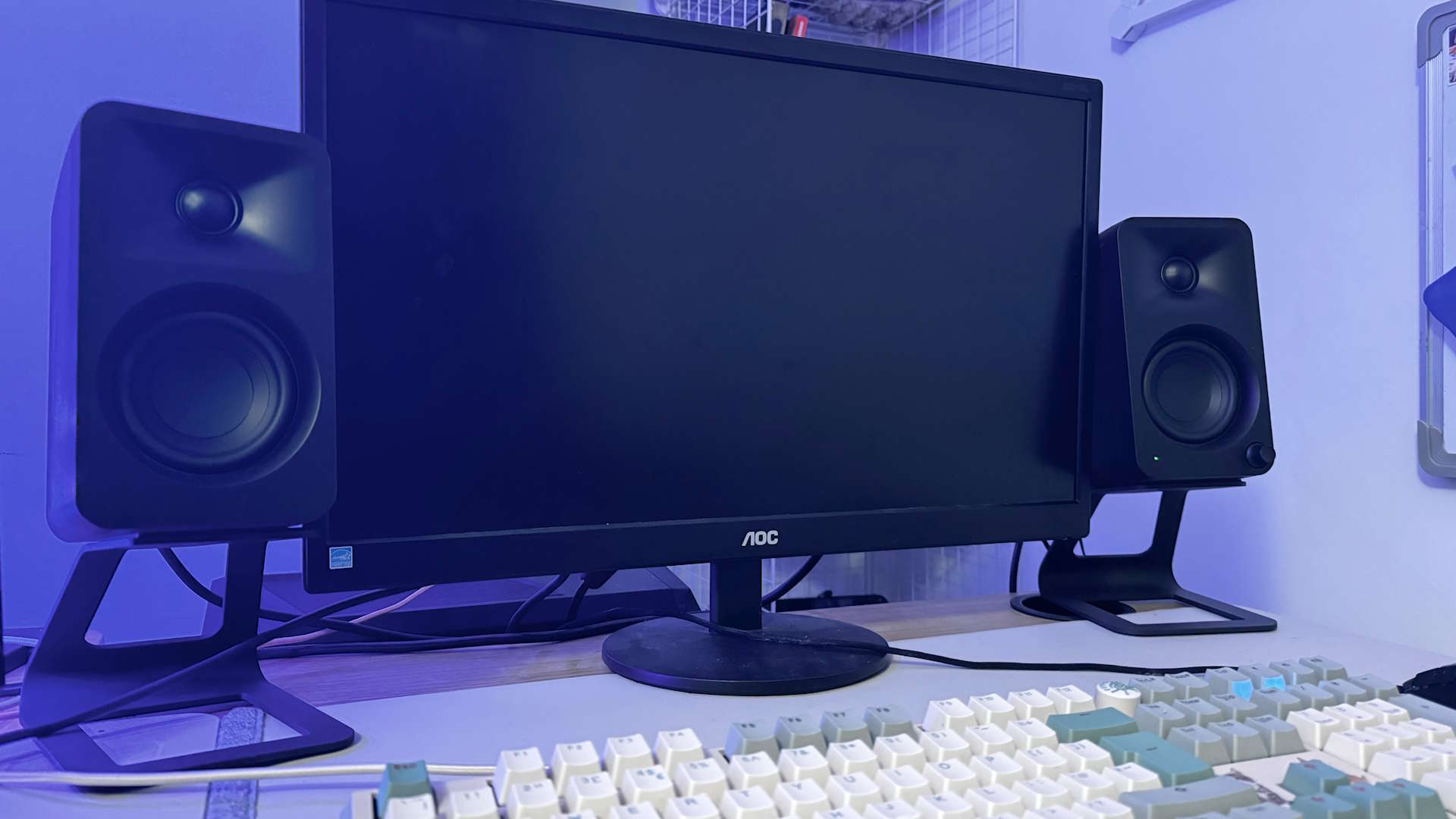
Specifications
Reasons to buy
Reasons to avoid
✅ You want immensely detailed sound: These are reference speakers, which ordinarily means they'd sound a little flat for casual listening. Not so here.
✅ You want an understated look: These are serious, professional-looking speakers and should blend in no matter where you put them.
❌ You're not prepared to pay up: $350 is a lot of money for speakers, although it has to be said, not a huge amount for reference units. Still, for regular usage, that's quite a bit to spend.
❌ You don't have the cables: Cables are cheap, it's true. Still, it'd be nice if Kanto included some in the box, other than the one that links the two speakers together.
The Kanto Ora speakers are rather ordinary-looking. For some, that's going to be a bonus, and for others, it's something of a letdown given the $350 price tag. However, that flat black aesthetic betrays the fact that these speakers are not out to impress with their looks but are instead designed to blend into a studio setup. All that really matters in a studio environment is sound, and audio quality is where the Ora set really shines, which makes them the best reference speakers you can buy for the money.
Don't let the relatively small size fool you—the Kanto Oras can put out some serious bass and massive amounts of volume, too. More than that, they're detailed in a way that should allow you to hear not only the nuances of your favorite tunes, but also positional audio as well as ambient noises in your games.
Being reference speakers, these units are designed to deliver what's there and not mollycoddle the sound into becoming something that it's not. Often, that can lead to a flat, lifeless sound, but the Oras have just enough user-friendly magic sprinkled on top of their driver design to ensure that you end up with the best of both worlds: a fantastically accurate sound which still pleases the ears.
And for the money, they'd better. Still, reference speakers are not cheap, so they actually represent excellent value for the level of audio quality they're able to fire at your eardrums—and with this much volume on top, potentially your neighbor's ears too.
Connectivity-wise, you've got the option of USB-C, RCA or Bluetooth. That's a greatest-hits lineup right there, although with one major omission: a 3.5 mm aux input. Still, that wouldn't be a problem with the addition of a very cheap 3.5 mm to RCA cable, which is why it's baffling that the box doesn't include one, or indeed, any cables at all. Well, apart from the one that connects the two speakers together, anyway. That'd be really silly not to include.
Still, the Kanto Oras sound fantastic, and really, that's all they aim to do. If you're looking for pure gaming audio only, then they're probably a bit much for your purposes. But if you want speakers that can do it all and do it with just about the best audio quality you'll find outside of a studio environment, well, these are probably exactly what you need.
They're the best reference speakers we've tested to date, and despite the cost, that makes them some of the best speakers you can plug into your PC, too.
Read our full Kanto Ora review.
Also tested
SteelSeries Arena 9
For gaming, this 5.1 system makes a lot of sense. For music, though, it's unbalanced—and massively pricey, too.
PC Gamer score: 73%
Read our full SteelSeries Arena 9 review.
Razer Nommo V2 Pro
A bassy and powerful set of speakers, although they can get a little muddy. Still, while they're a bit pricey, they make a tempting set of cannons.
PC Gamer score: 80%
Read our full Razer Nommo V2 Pro review.
NZXT Relay system
The NZXT Relay system is a bit of a pain to buy and set up. That being said, once you've put it all together, it's more than the sum of its component parts.
PC Gamer score: 75%
Read our full NZXT Relay system review.
Drop BMR1 Nearfield Monitors
Clear and accurate, but a little lacking in bass. Short cables and a lack of control knobs isn't great at this price, either.
PC Gamer score: 81%
Read our full Drop BMR1 Nearfield review.
OXS Thunder Pro
This gaming soundbar looks impressive, has great connectivity, and can get very loud, but it's a bit expensive for some pretty mid mids.
PC Gamer score: 70%
Read our full OXS Thunder Pro review.
Majority D80
With great and powerful sound at a reasonable price, these speakers are a solid choice if you don't mind their big size, small cables, and middling EQ settings.
PC Gamer score: 82%
Read our full Majority D80 review.
Q&A
Do I need a 2.1, 5.1, or 7.1 setup?
You'll mostly find 2.1 setups for the PC market cover just left/right channels and a subwoofer, and perhaps more often than that, even devoid of a subwoofer for a 2.0 setup. That's mainly because that fits the bill for a desktop and monitor, with the speakers in front of the user for decent stereo sound.
Living room speaker setups and home cinema systems will take that a little further, often offering at least five surrounding speakers in most cases. You could hook such a system up to your PC and find decent support for such a configuration, but we're hesitant to recommend such a setup due to the sheer number of wires involved around a single desk. It doesn't bear thinking about.
Some companies will tout virtual 5.1 to make up for the lack of physical speakers, often at the expense of sound quality, including Windows' Sonic function. Don't forget that many games use clever 3D audio techniques to generate positional game audio with great accuracy, so you may find you don't need much of a helping hand.
Which is better, speakers or soundbar?
Since both speakers and soundbars can offer a similar audio experience, it all comes down to your desktop. If you've little space to spare, a pair of computer speakers will be best suited. Whereas a soundbar can take up a long stretch behind or under your monitor. That said, a soundbar can work a treat with monitors on arms or mounted off the desk.
The other thing to consider is that a soundbar might offer some extra features, such as beamforming or head-tracking, or come with a few more smaller tweeters than a standard 2:1 speaker set. But generally, it comes down to space as to which is best.
How do we test computer speakers?
We test each set of speakers in-game for several hours through a wide range of games with rich soundtracks and sounds, including Doom Eternal, Call of Duty: Warzone, Counter-Strike: Global Offensive, Overwatch, and Hellblade: Senua's Sacrifice. Afterwards, we run listening tests, which include snippets from the film Jurassic World and various albums in lossless FLAC format, such as Daft Punk's Random Access Memories and Psychic from Darkside.
One of the most important features to test for is the left/right balance with gaming in mind. To check this in-game, we use the CS: GO Audio Test Chamber workshop project by geri43. It's a simple tool that allows you to reproduce all sorts of in-game sounds, including ladder movements, sniper scopes, gunfire, footsteps, and more. Moving around the map or behind a wall allows us to manipulate the sounds' location and test how easily we can identify their direction with the speakers.
Keep up to date with the most important stories and the best deals, as picked by the PC Gamer team.

Andy built his first gaming PC at the tender age of 12, when IDE cables were a thing and high resolution wasn't—and he hasn't stopped since. Now working as a hardware writer for PC Gamer, Andy's been jumping around the world attending product launches and trade shows, all the while reviewing every bit of PC hardware he can get his hands on. You name it, if it's interesting hardware he'll write words about it, with opinions and everything.
- Reece BithreyContributor
- James BentleyHardware writer
